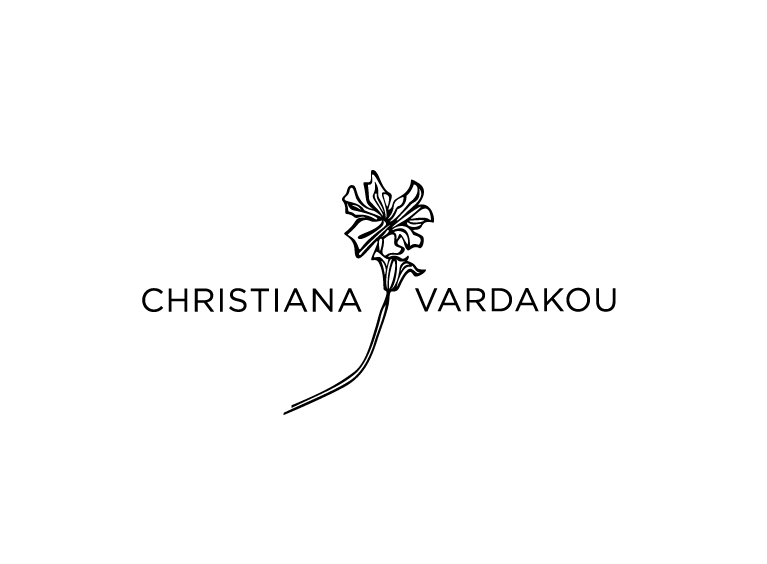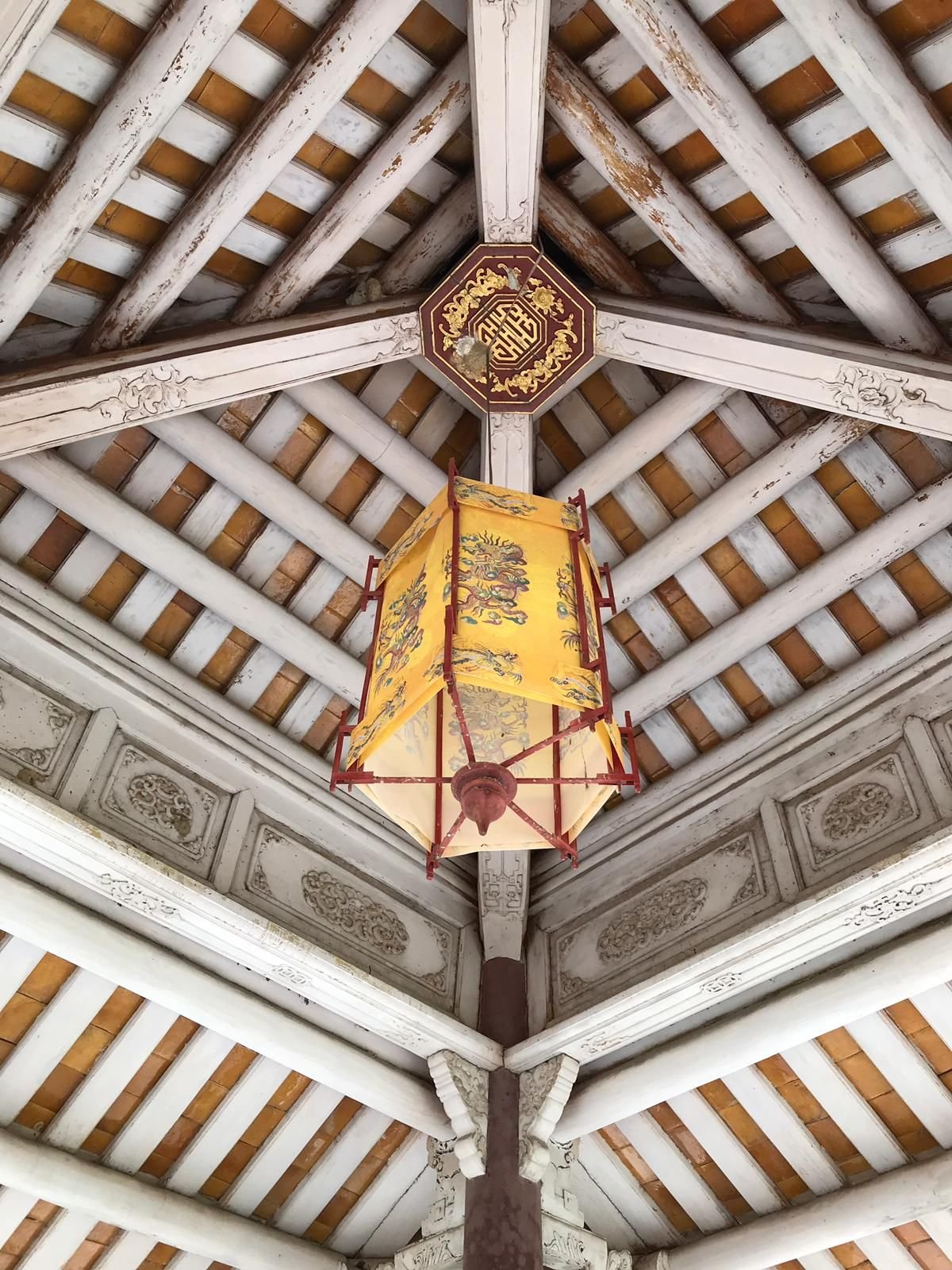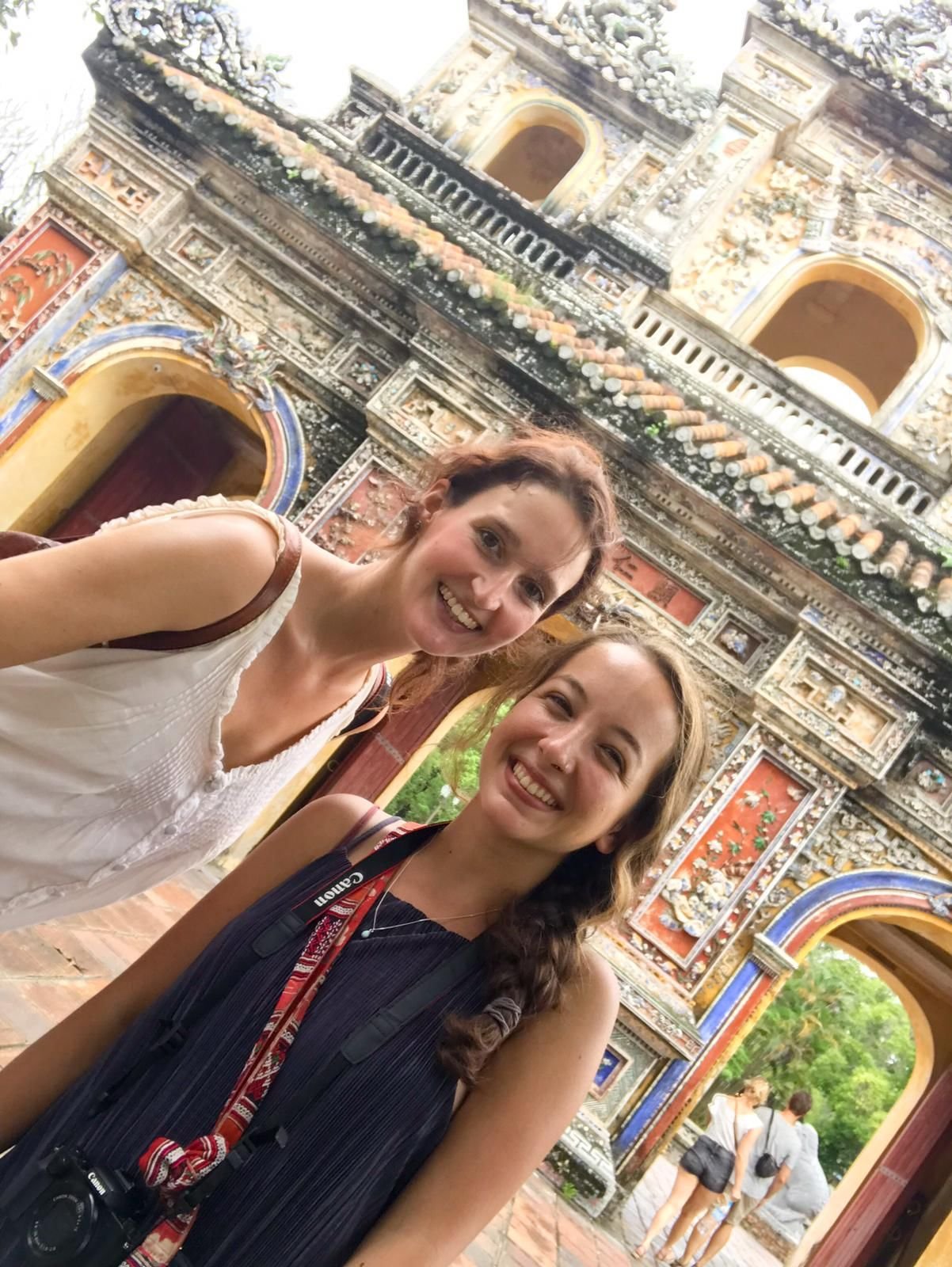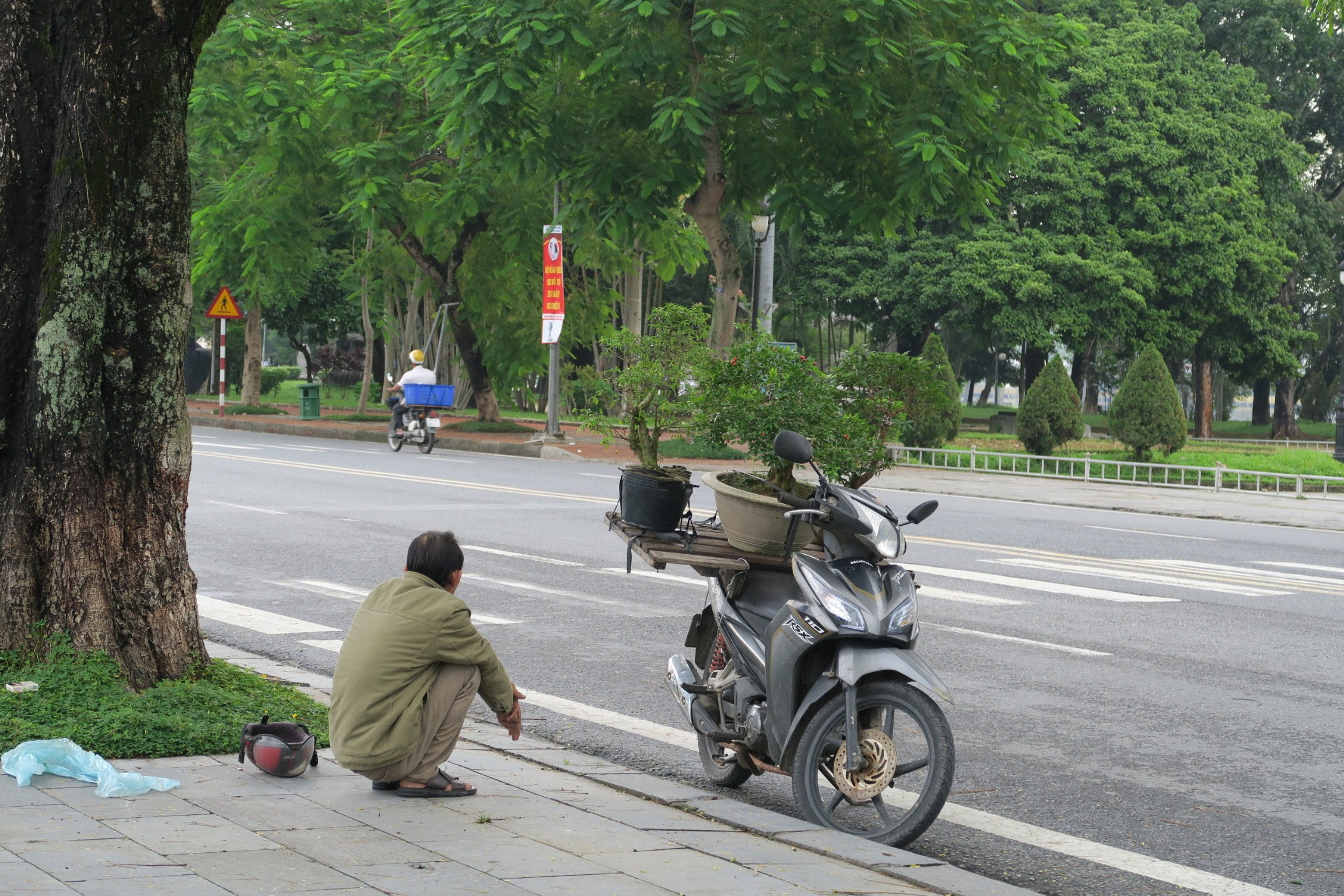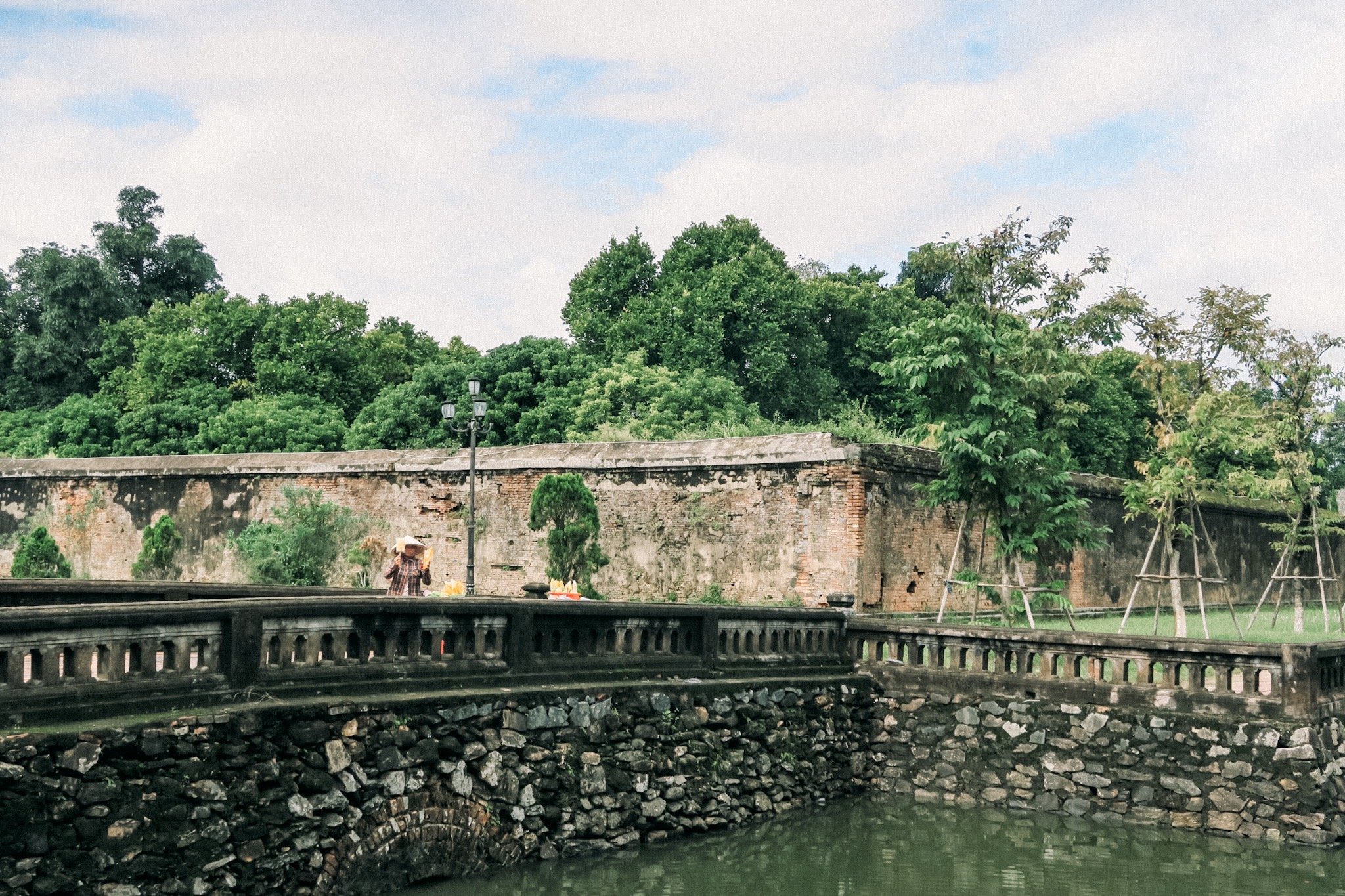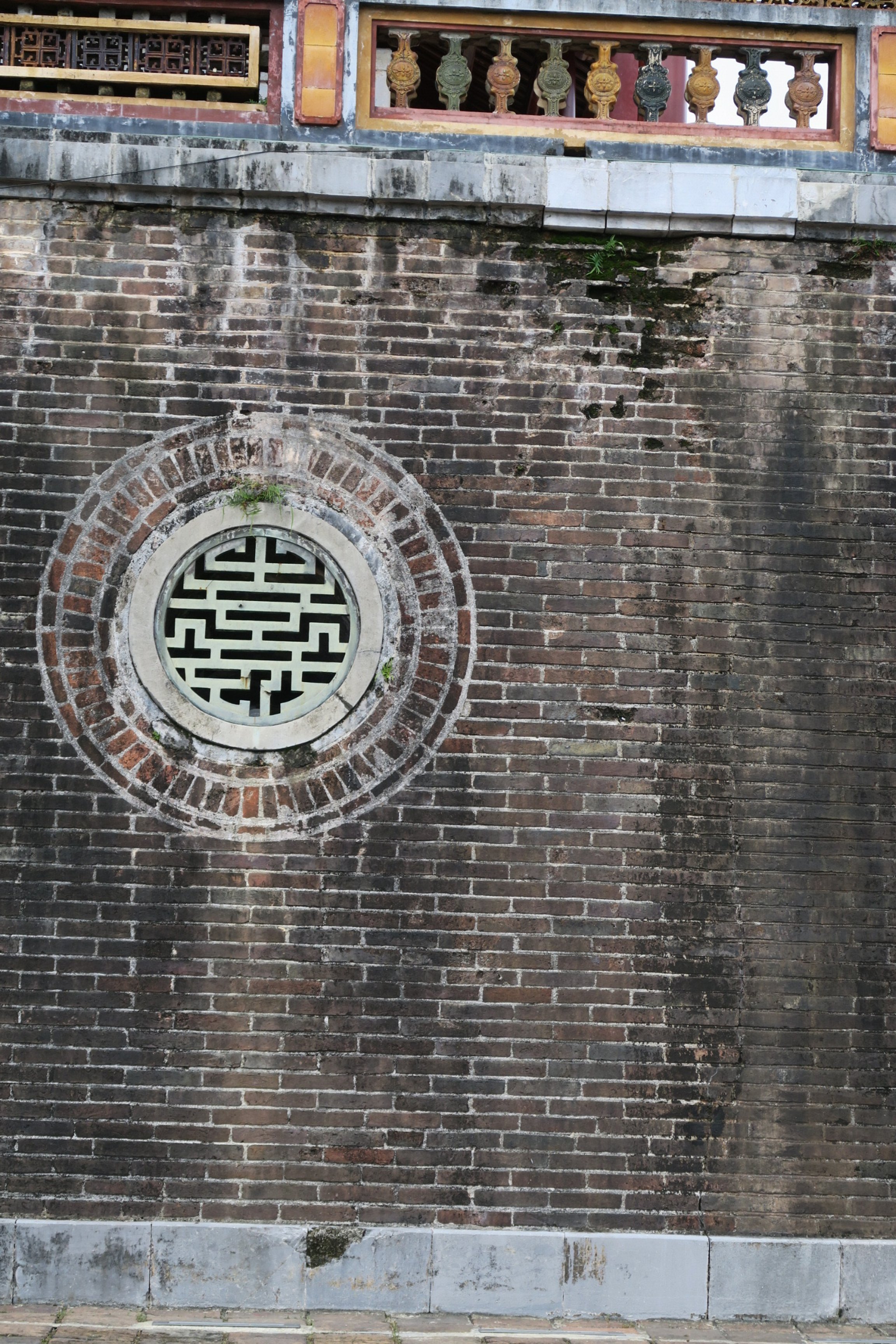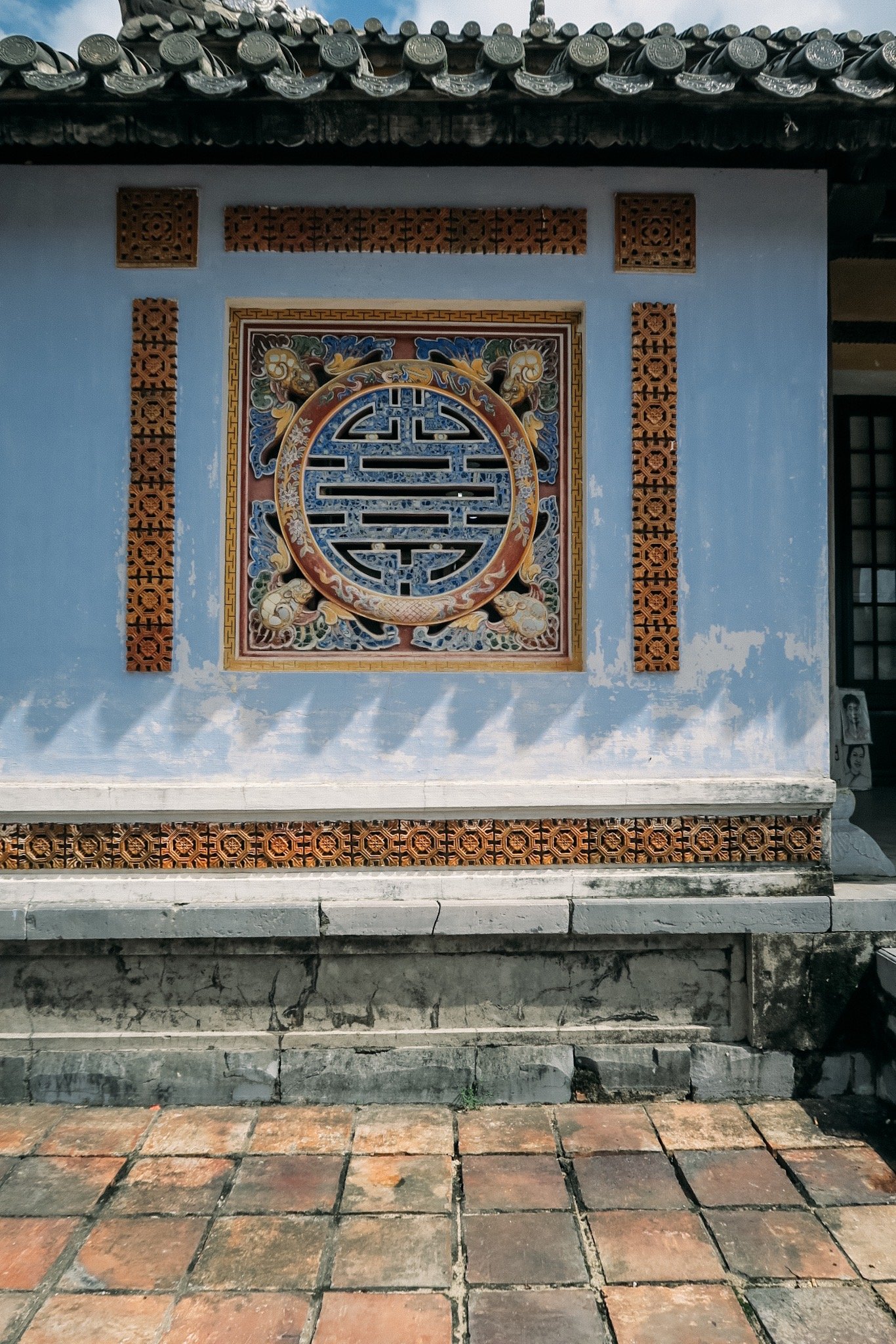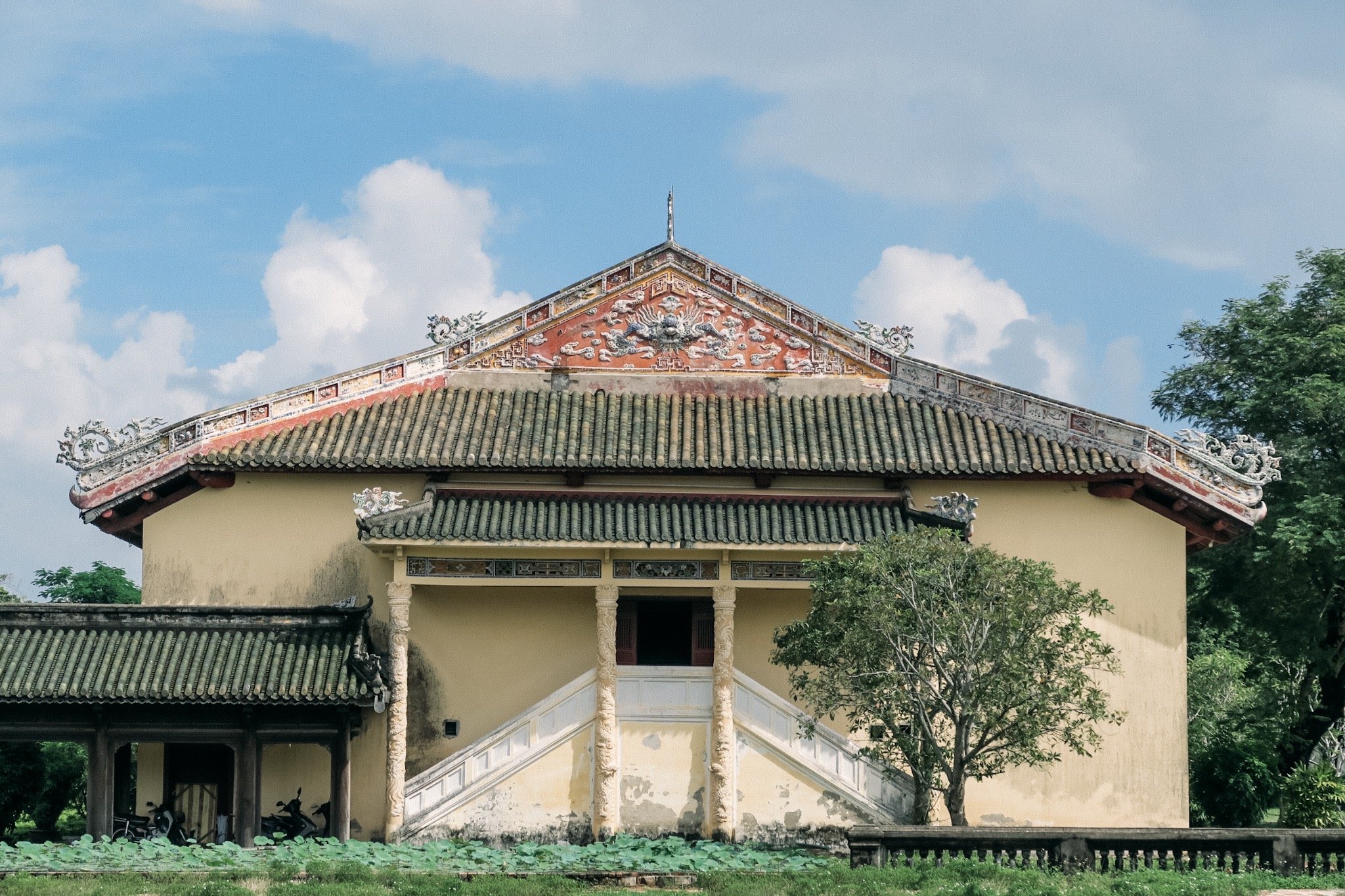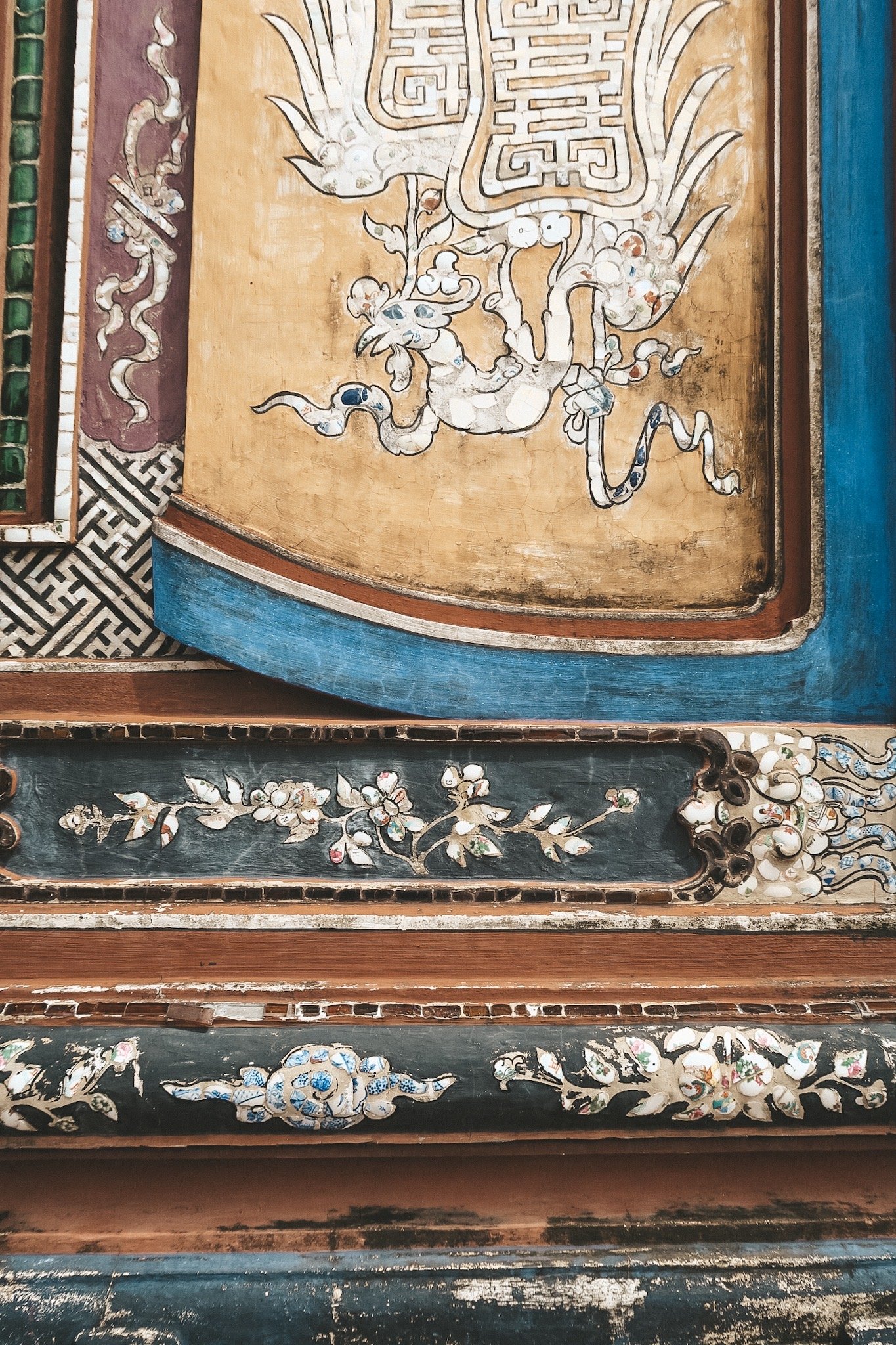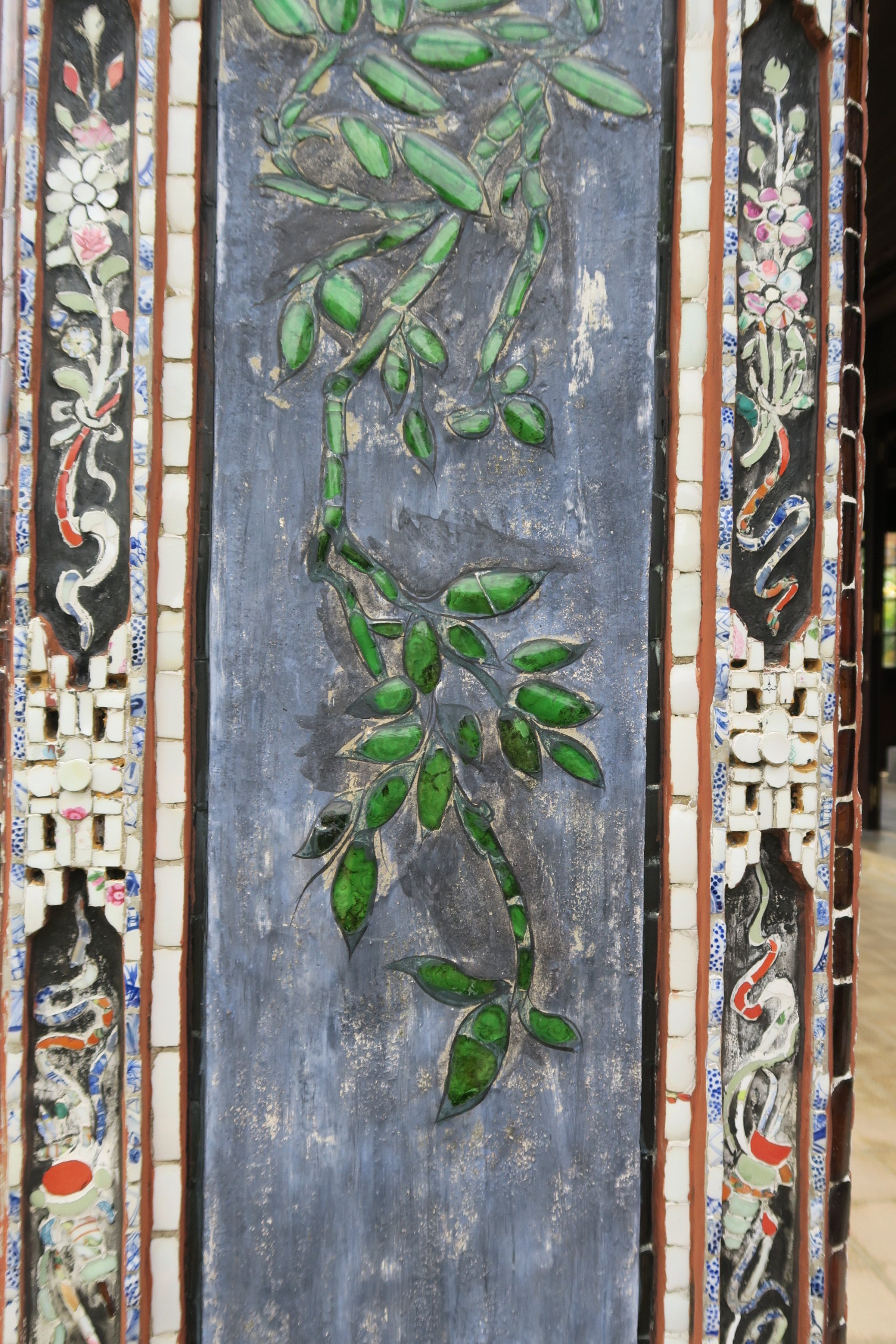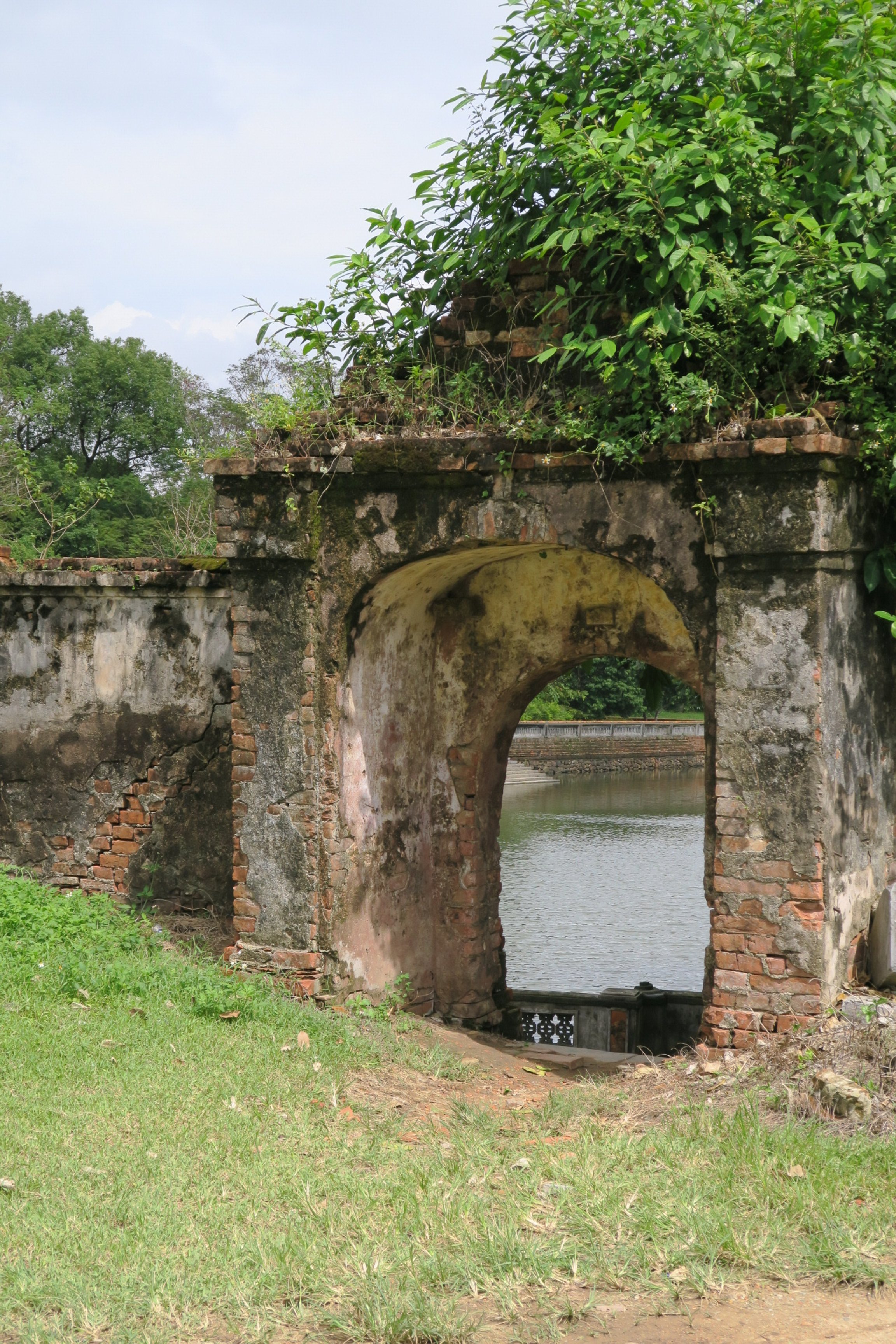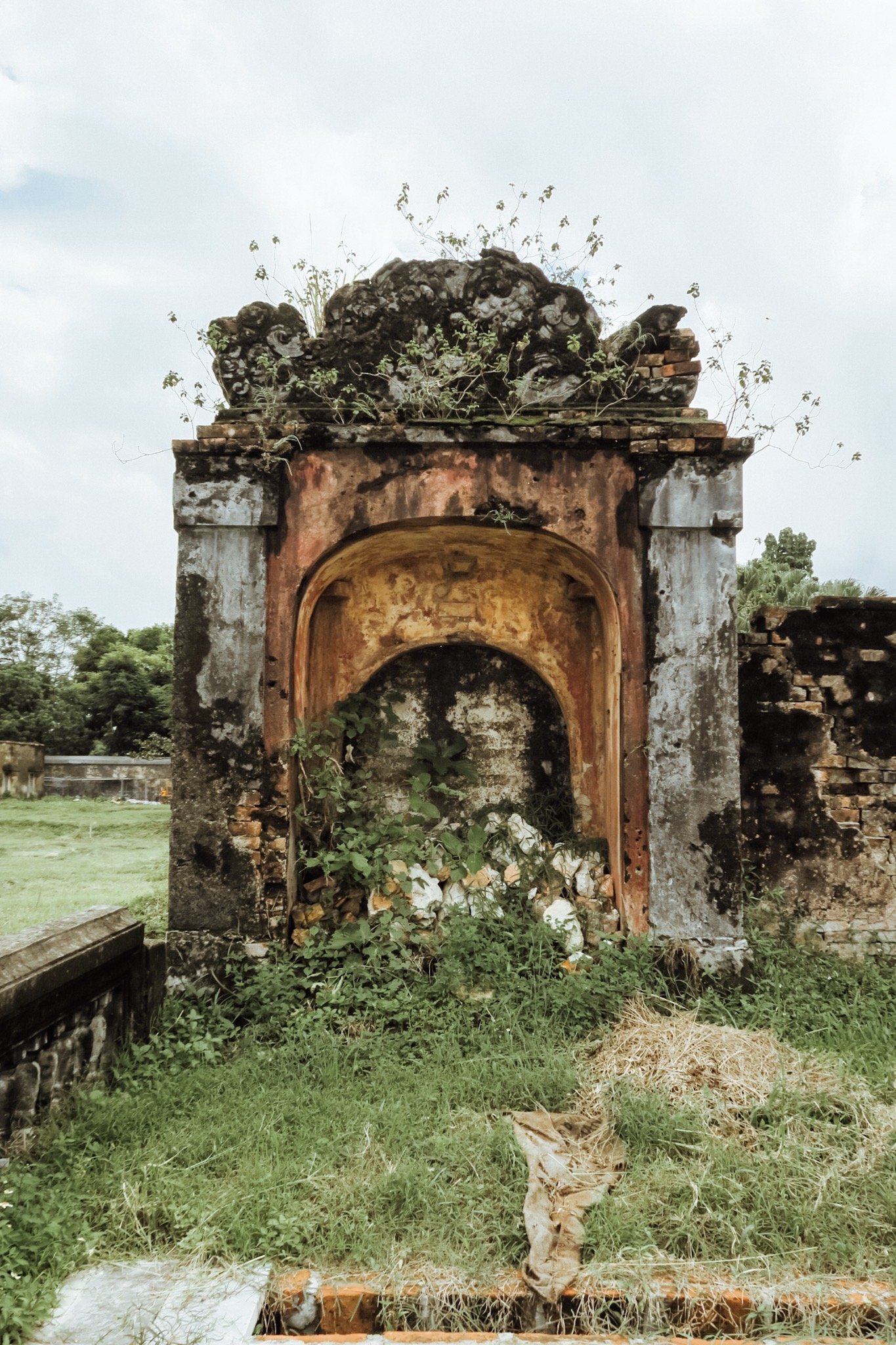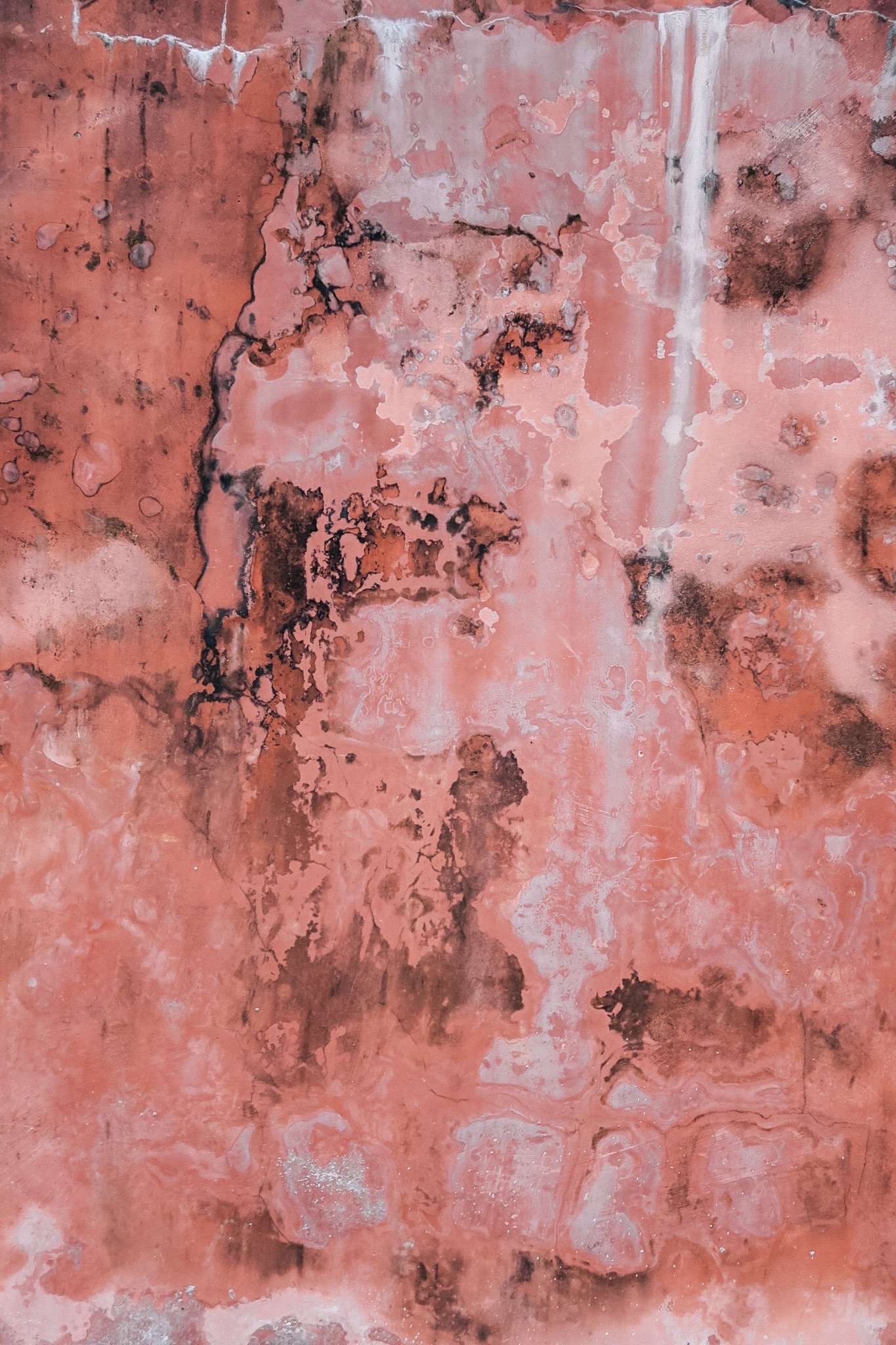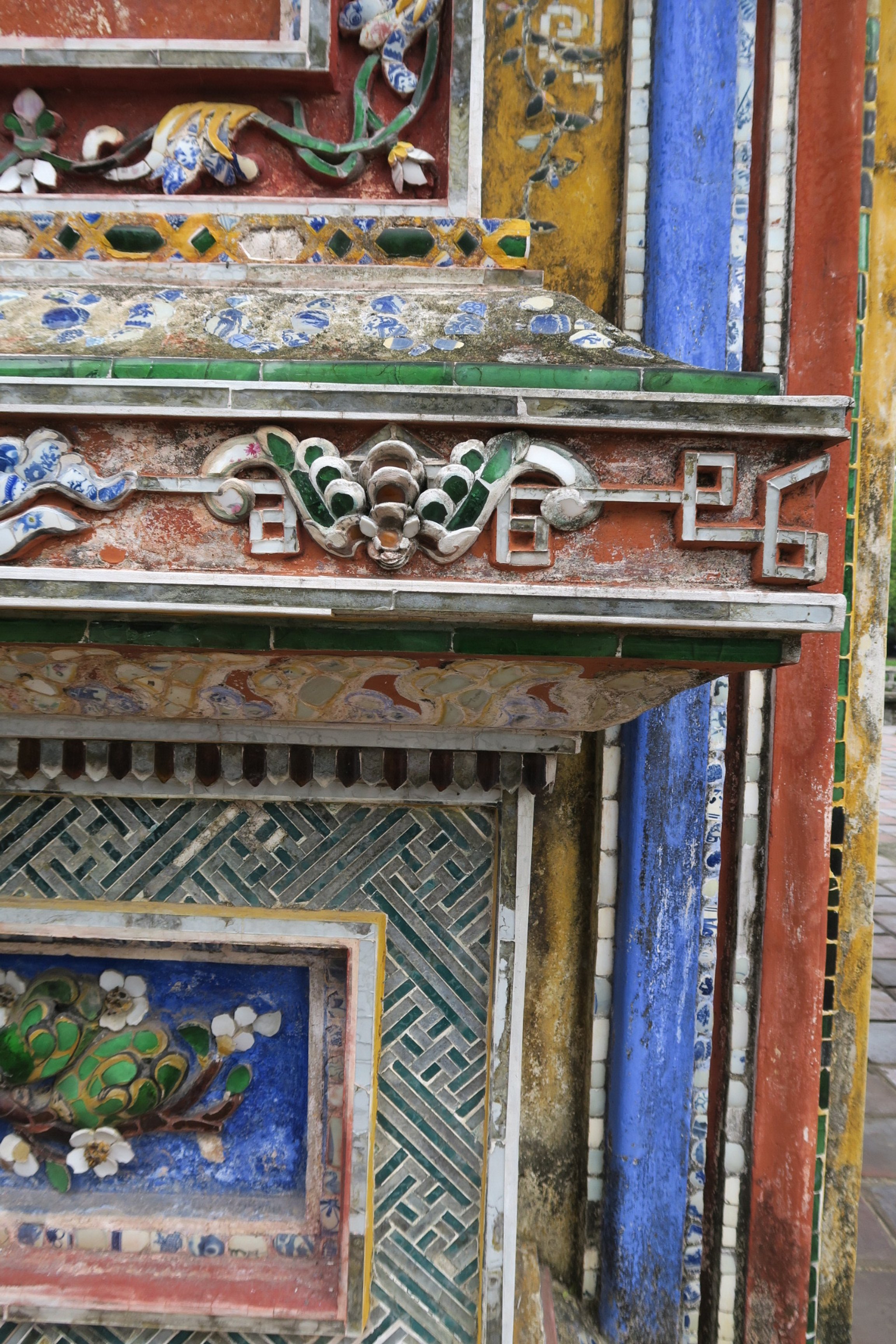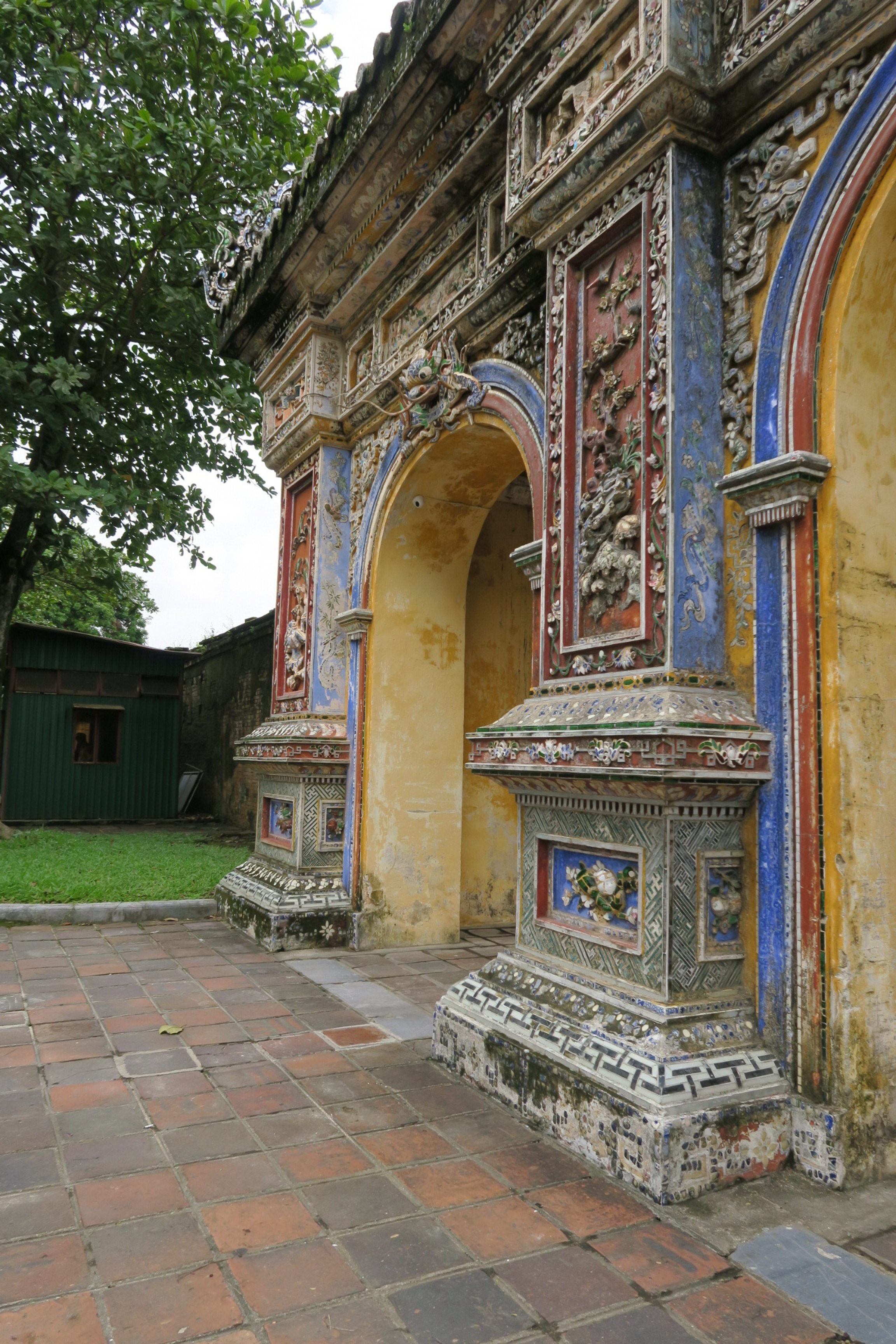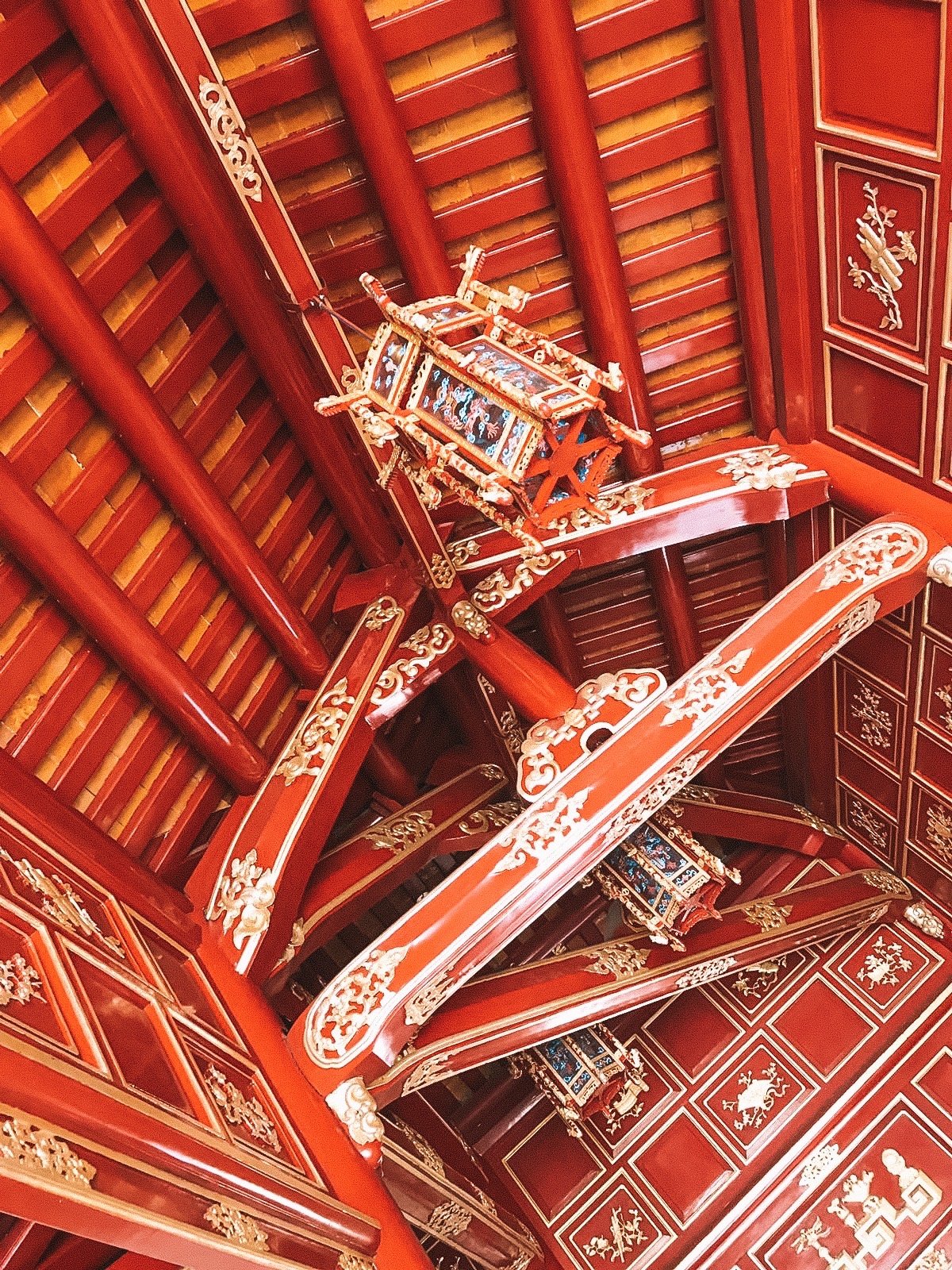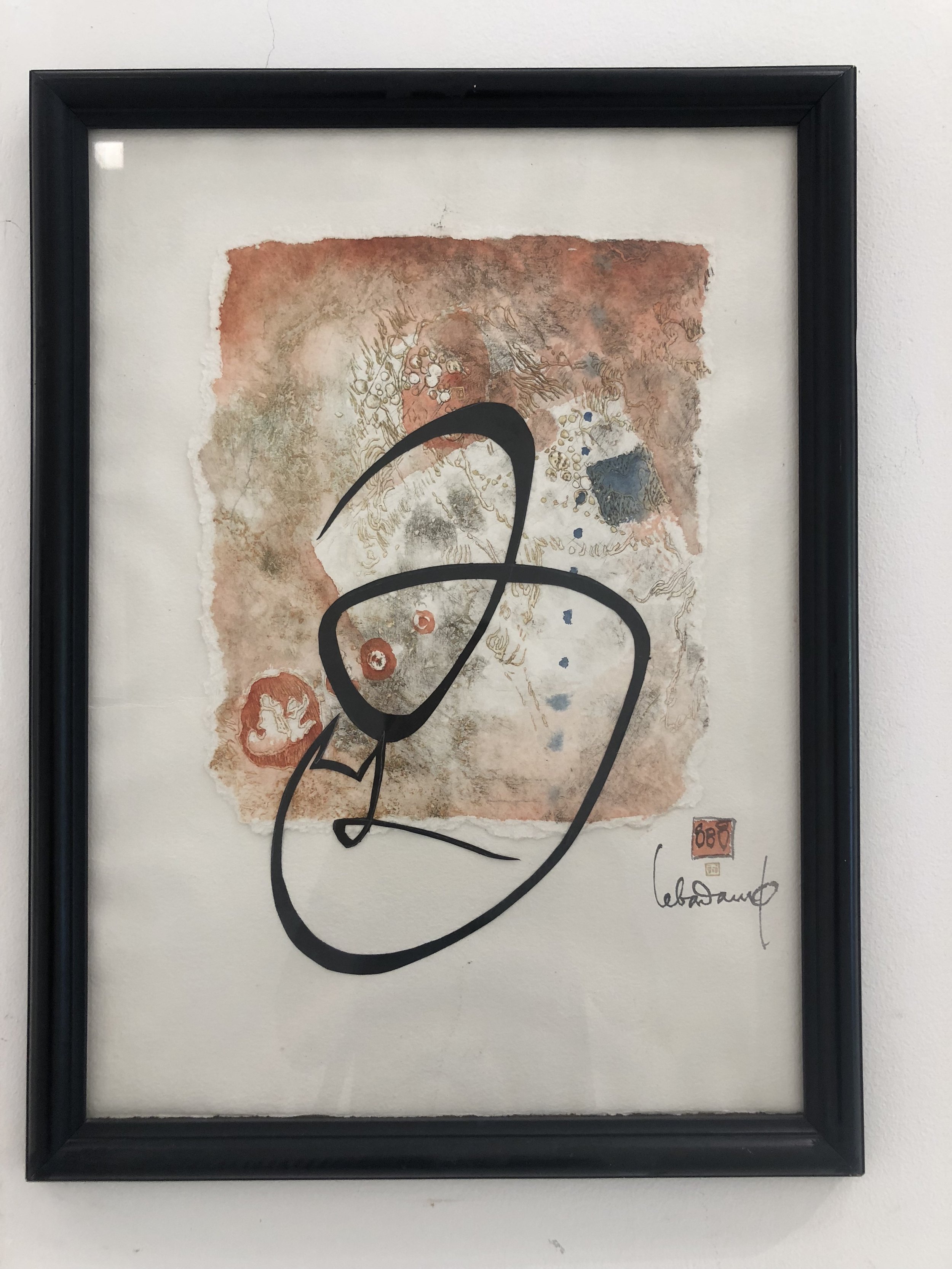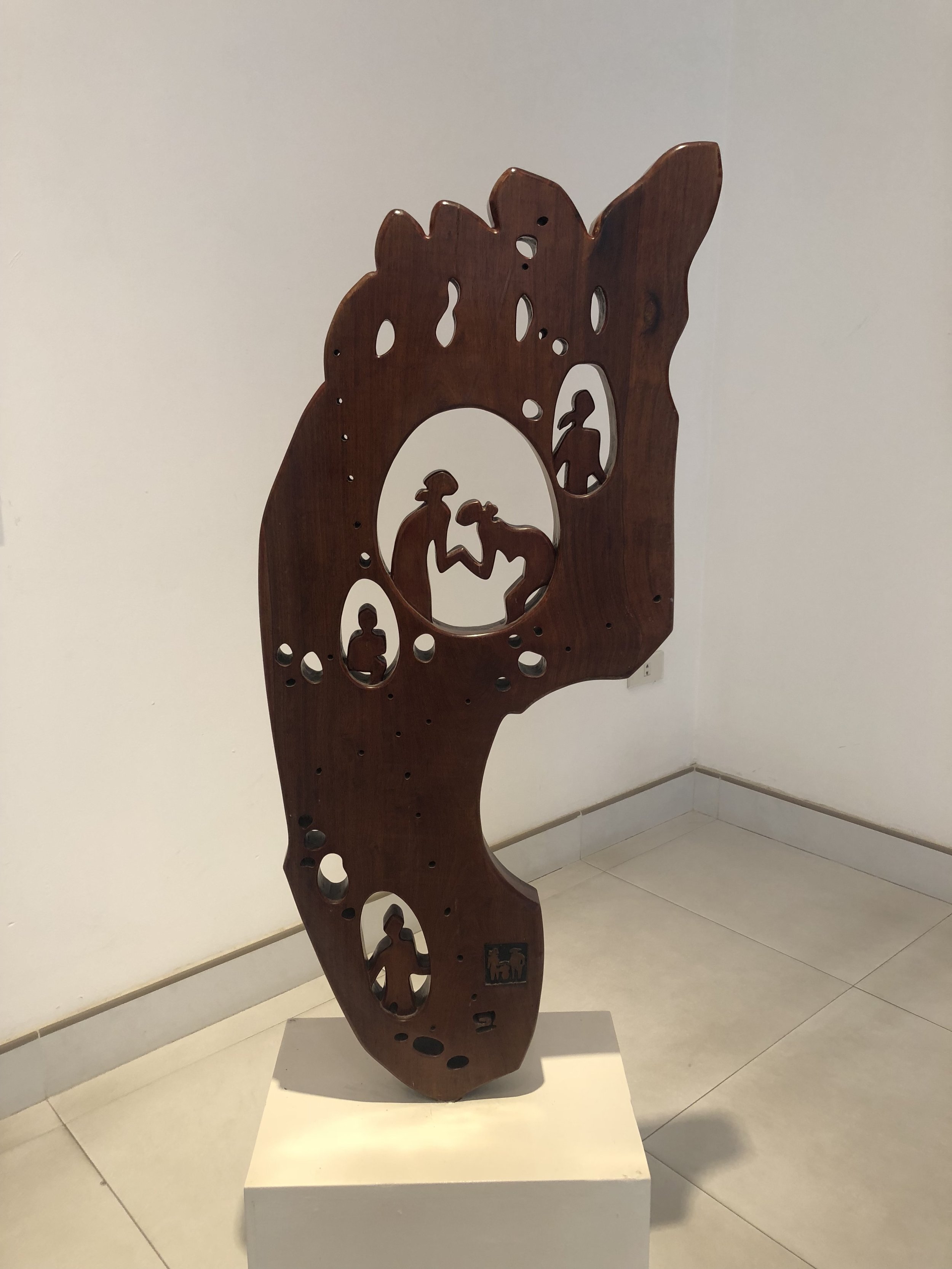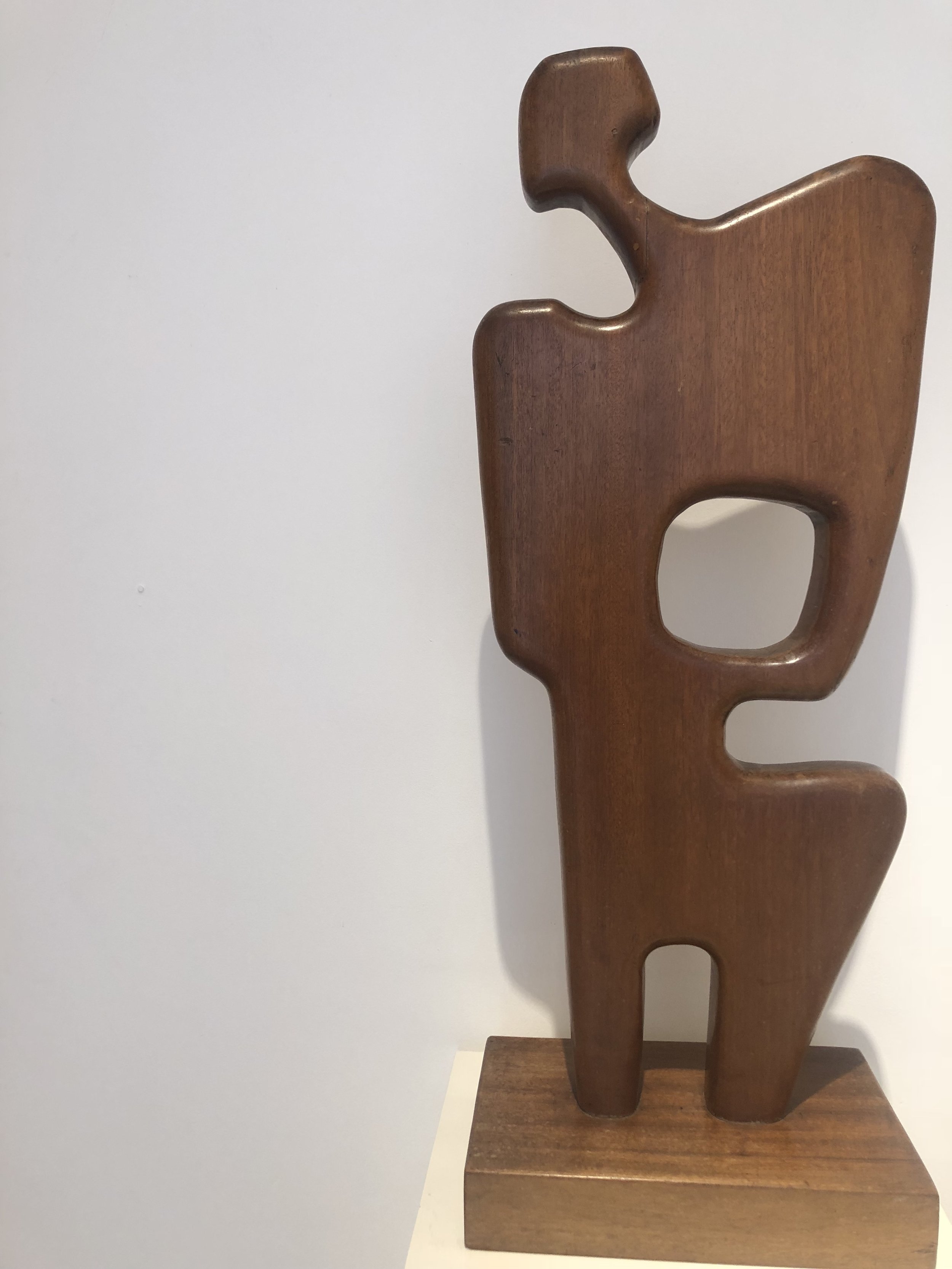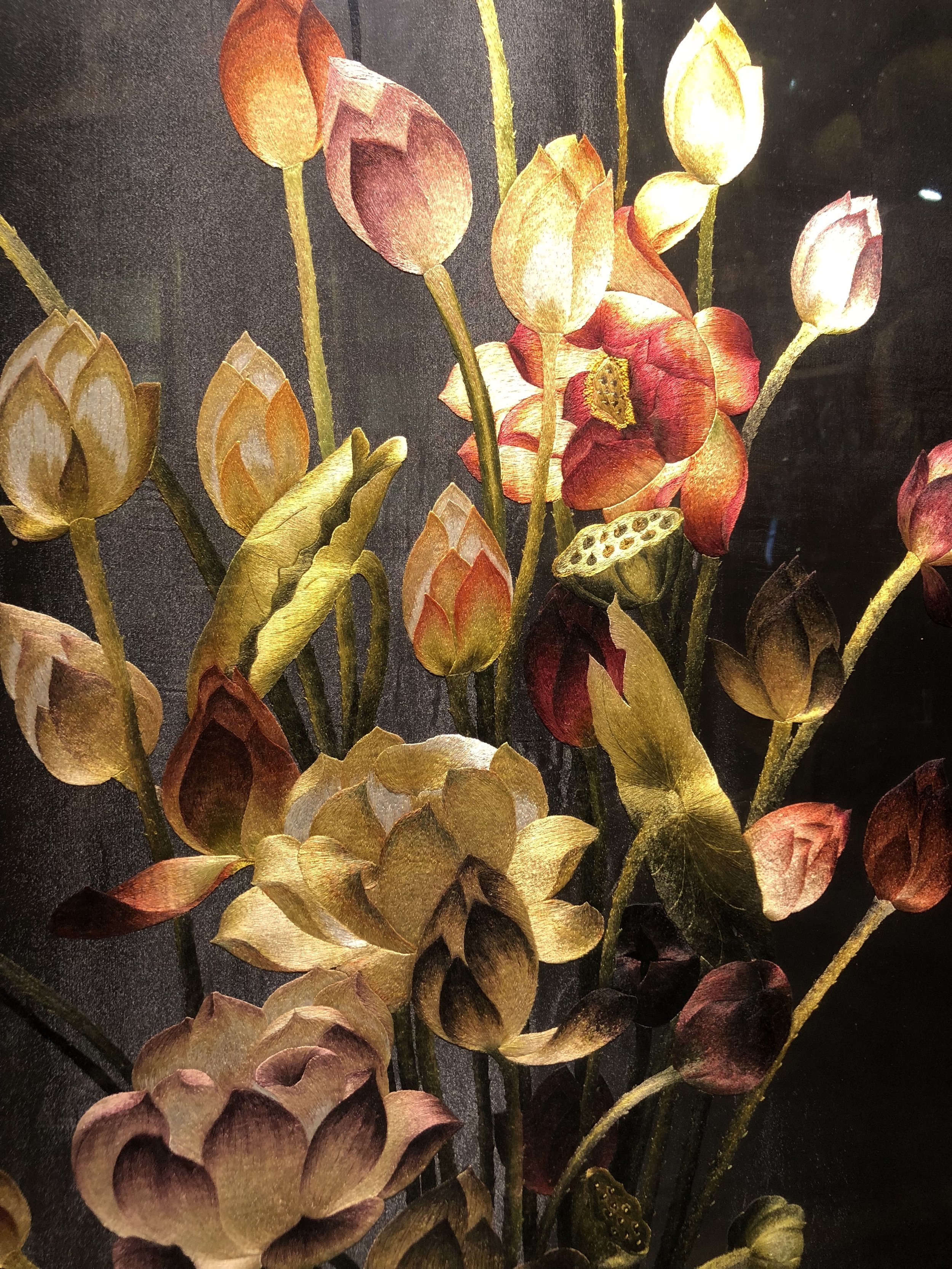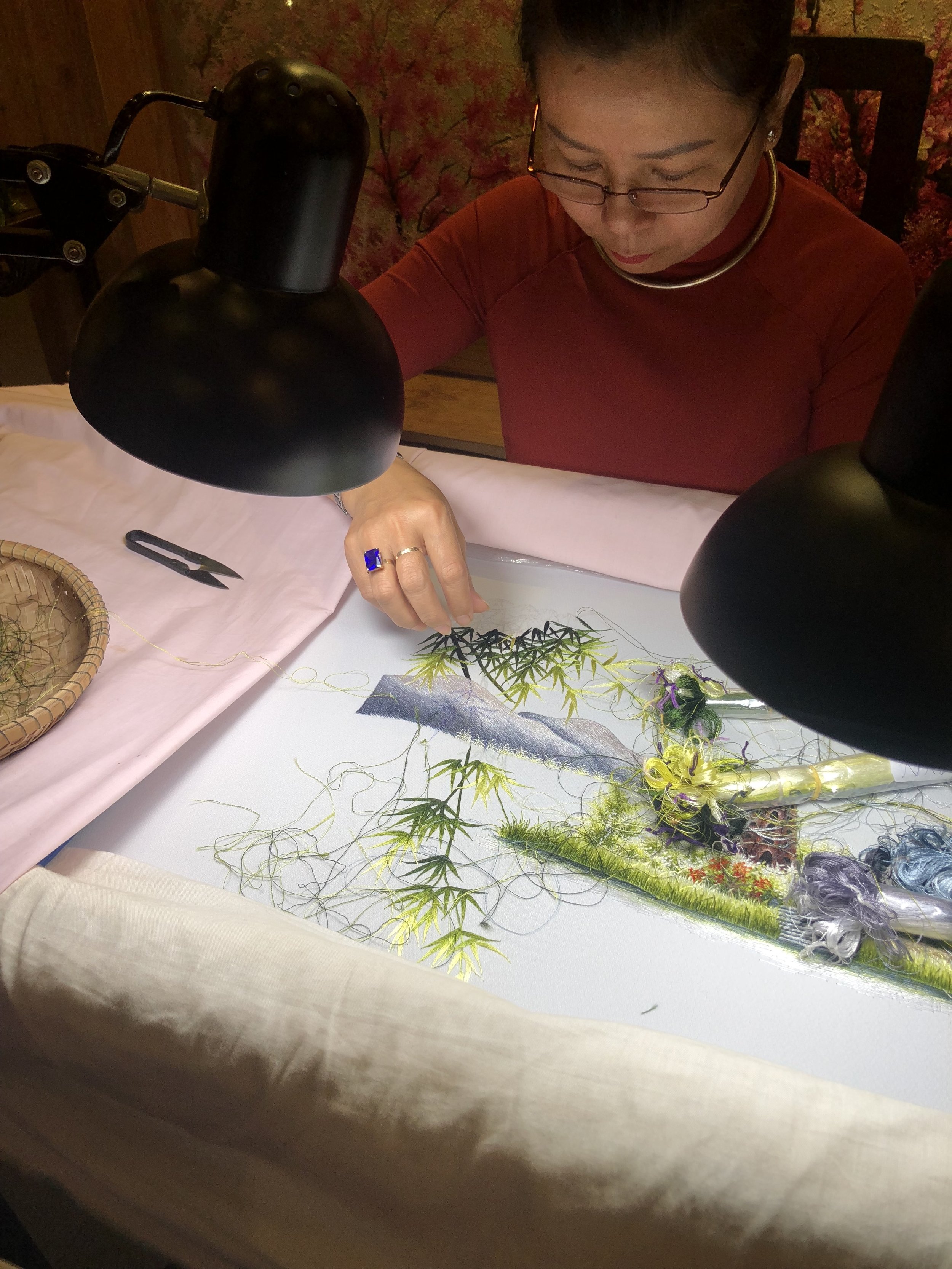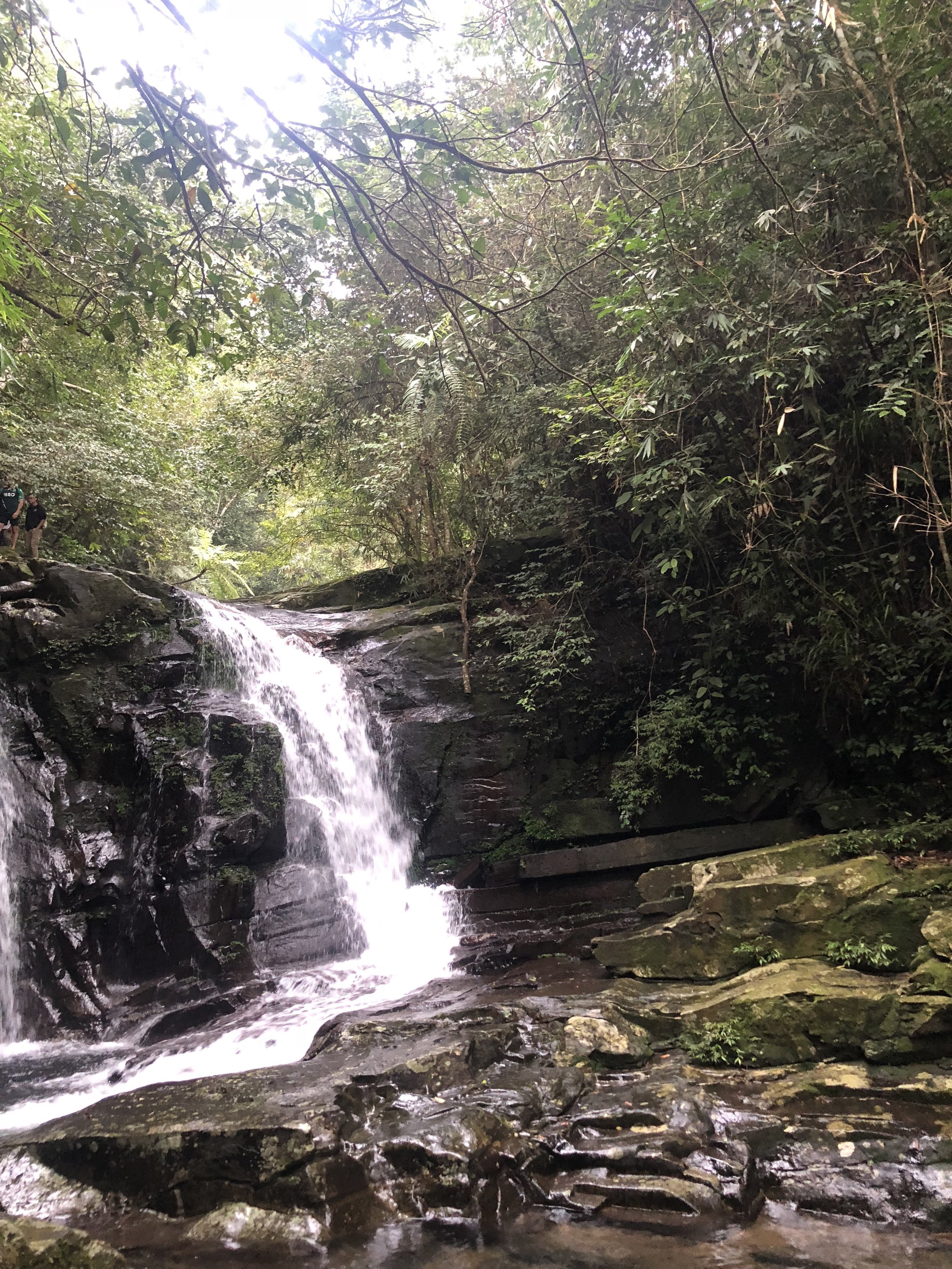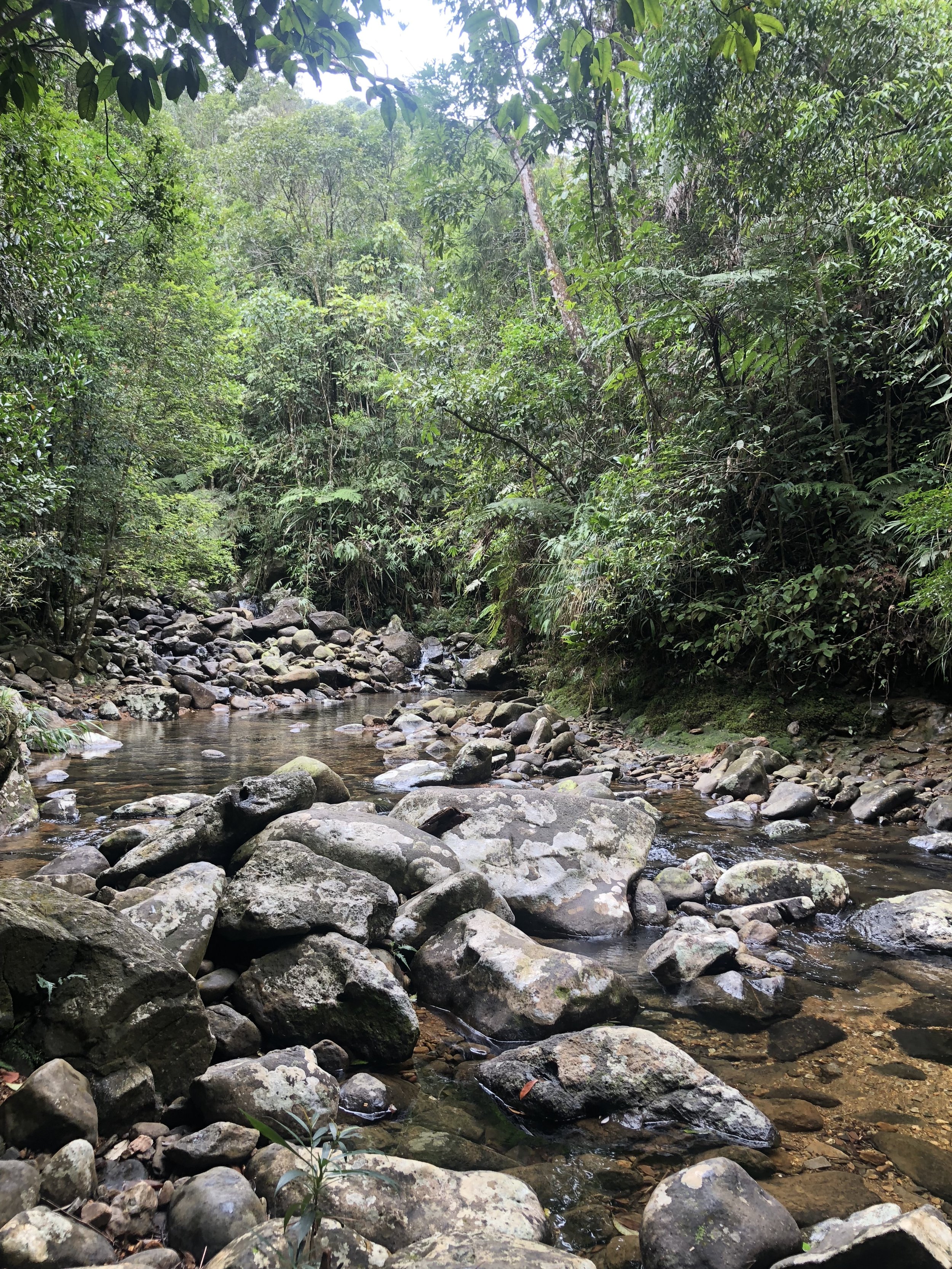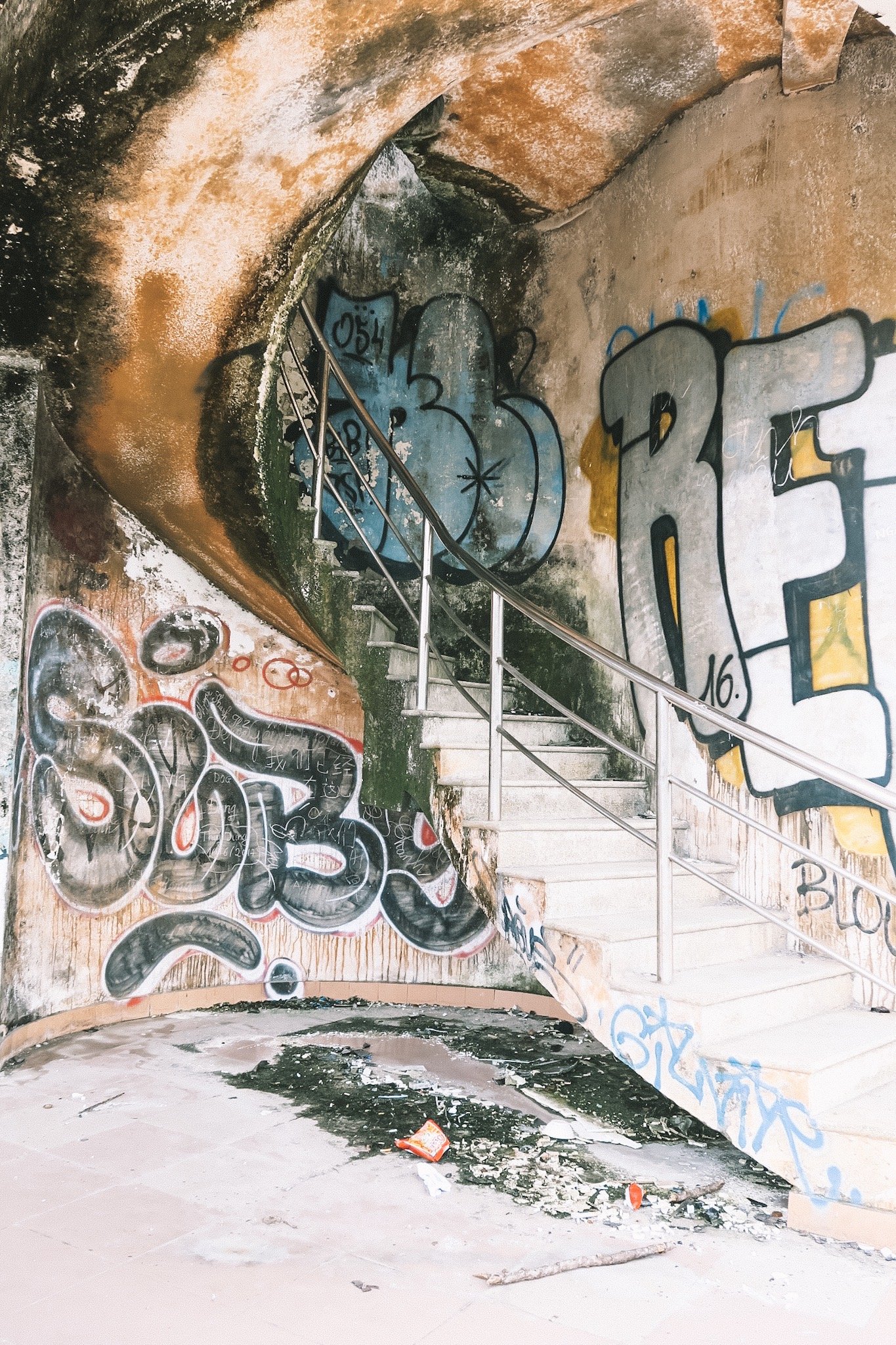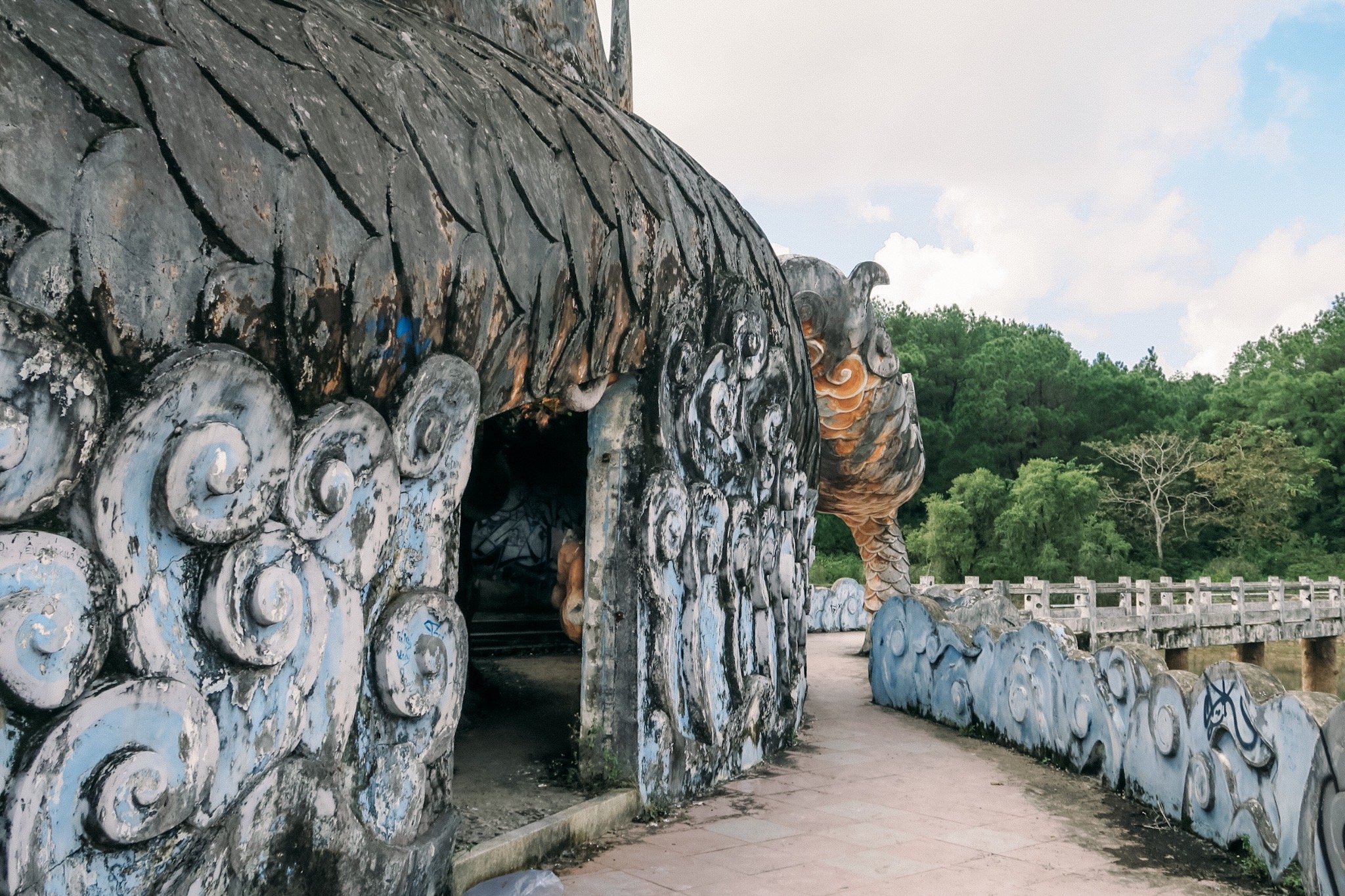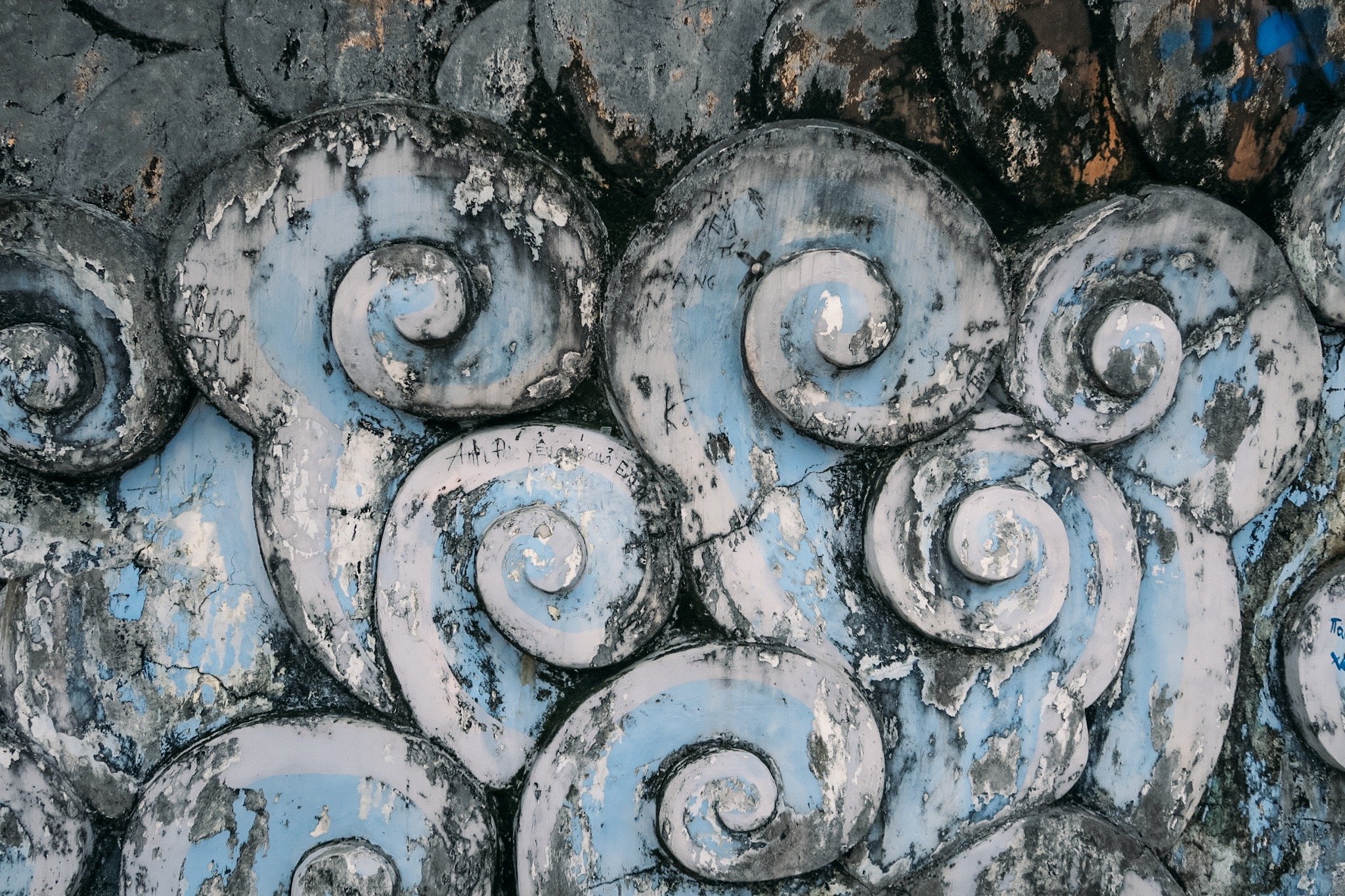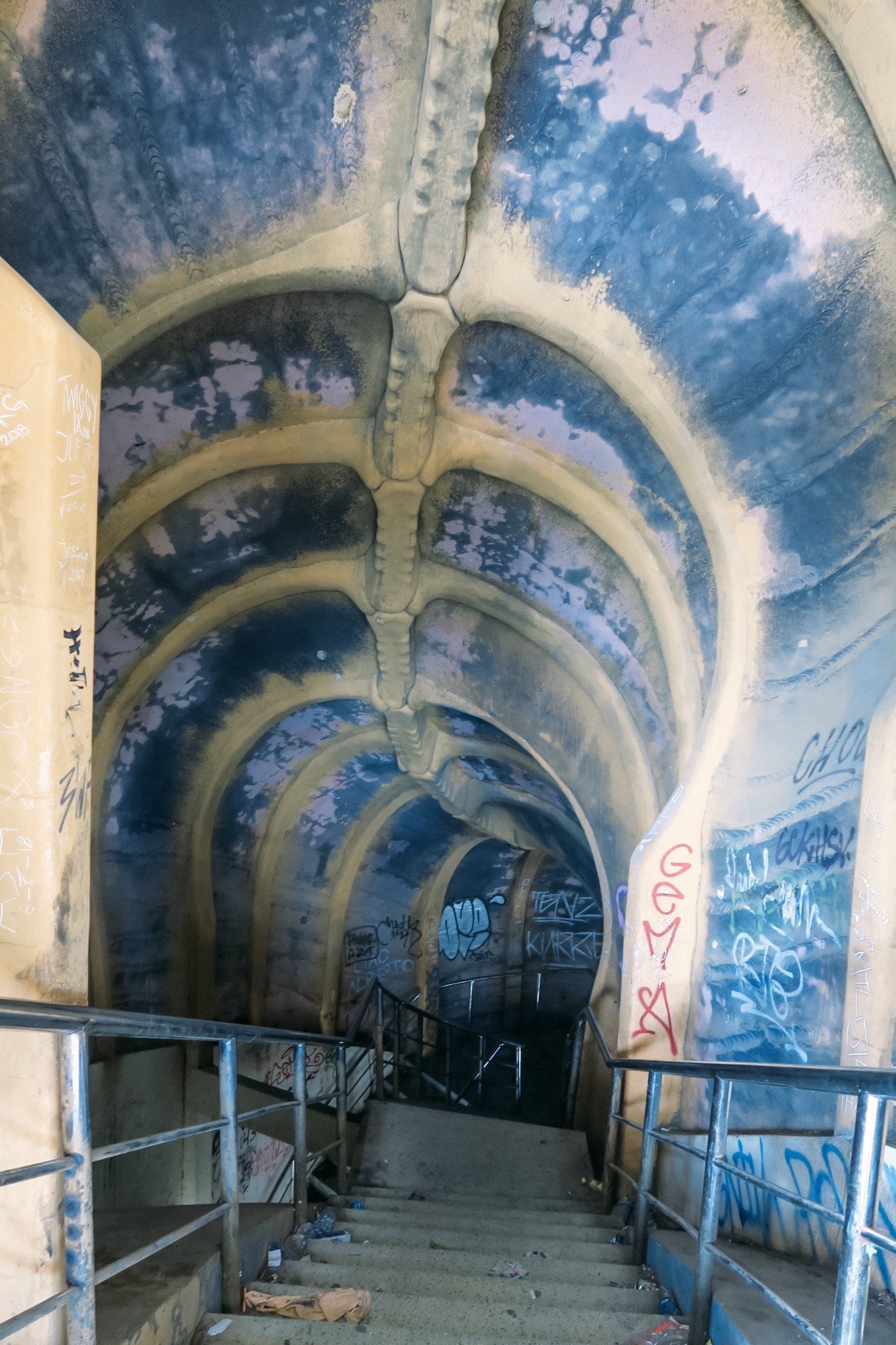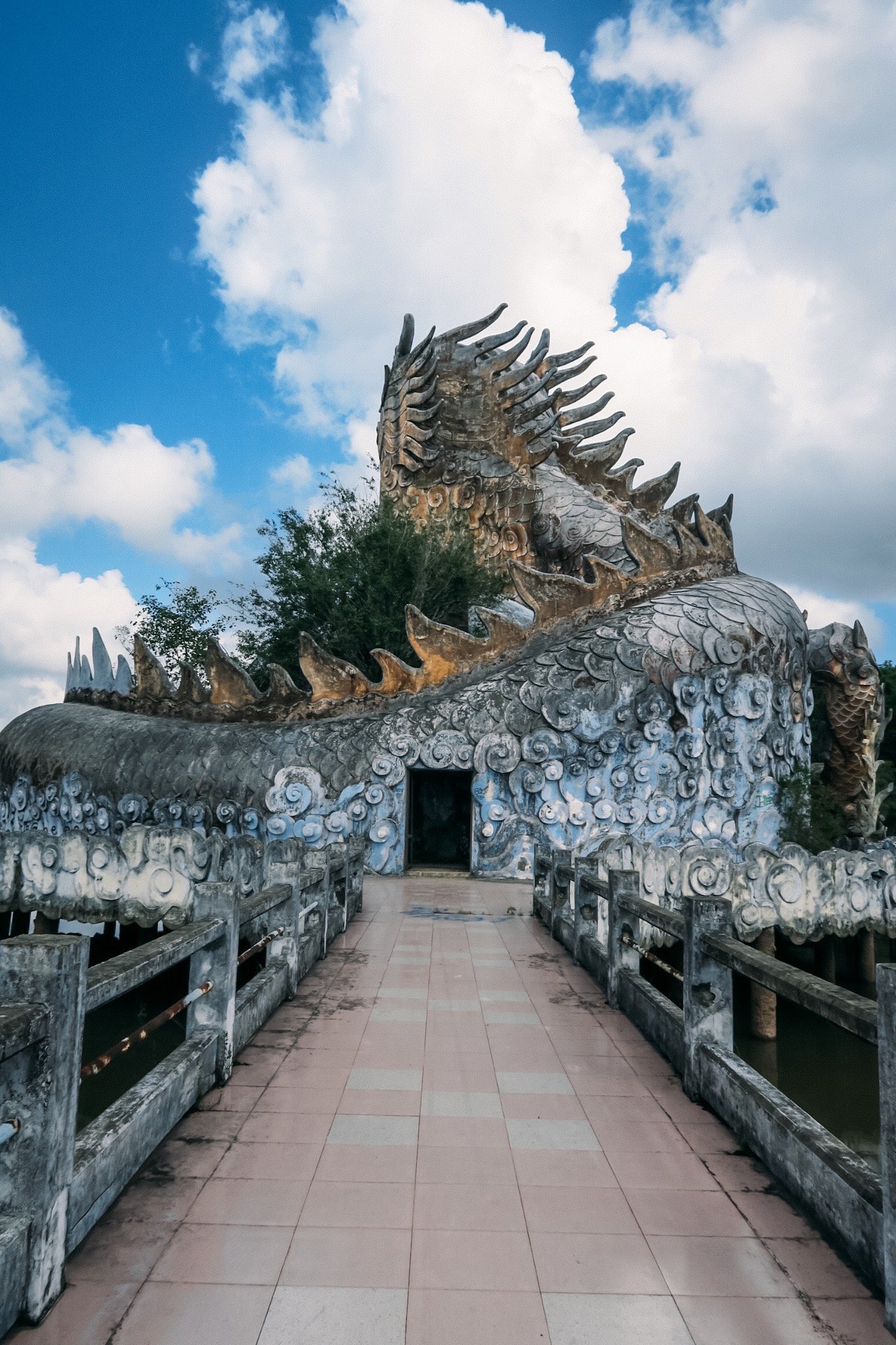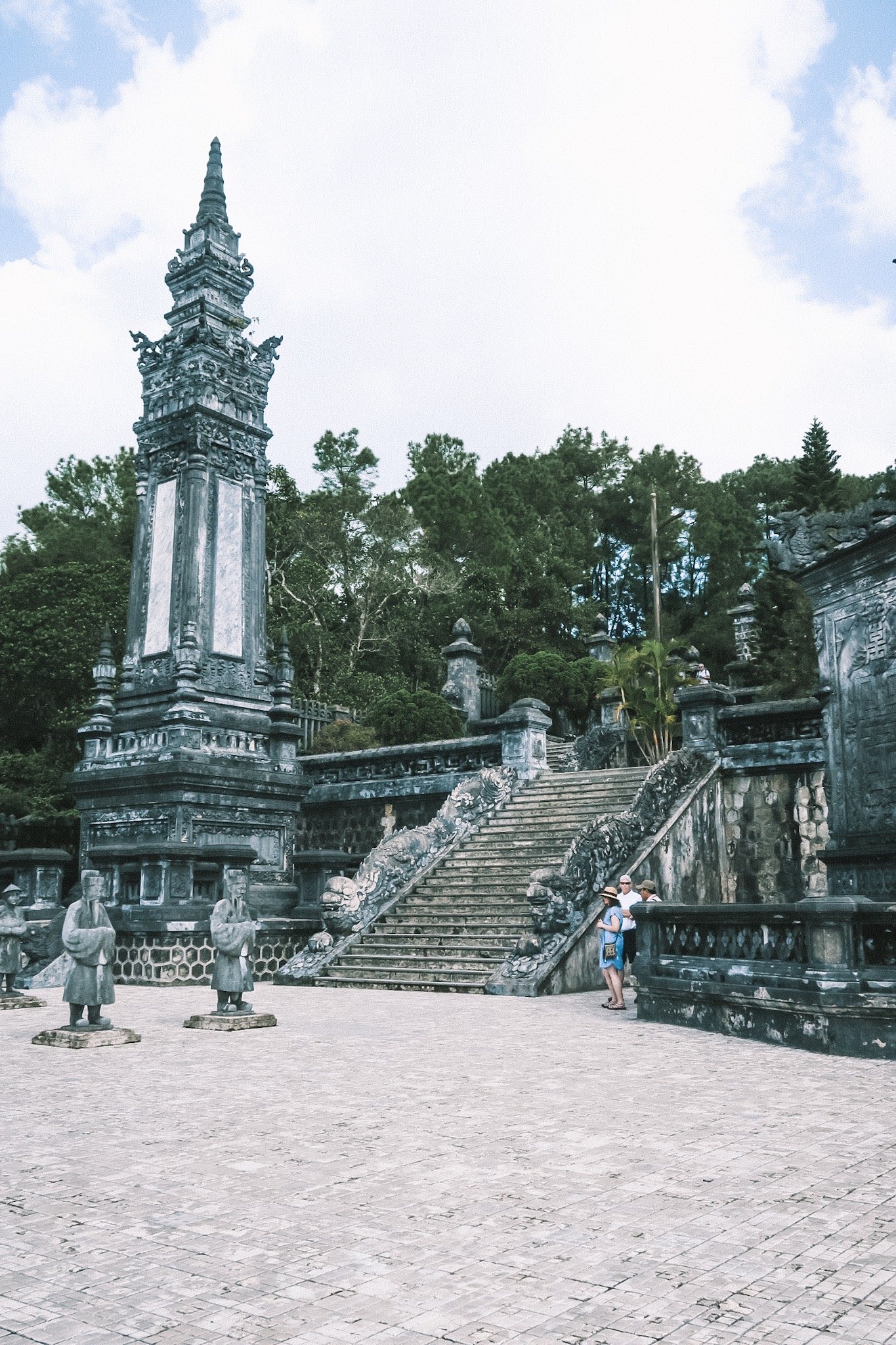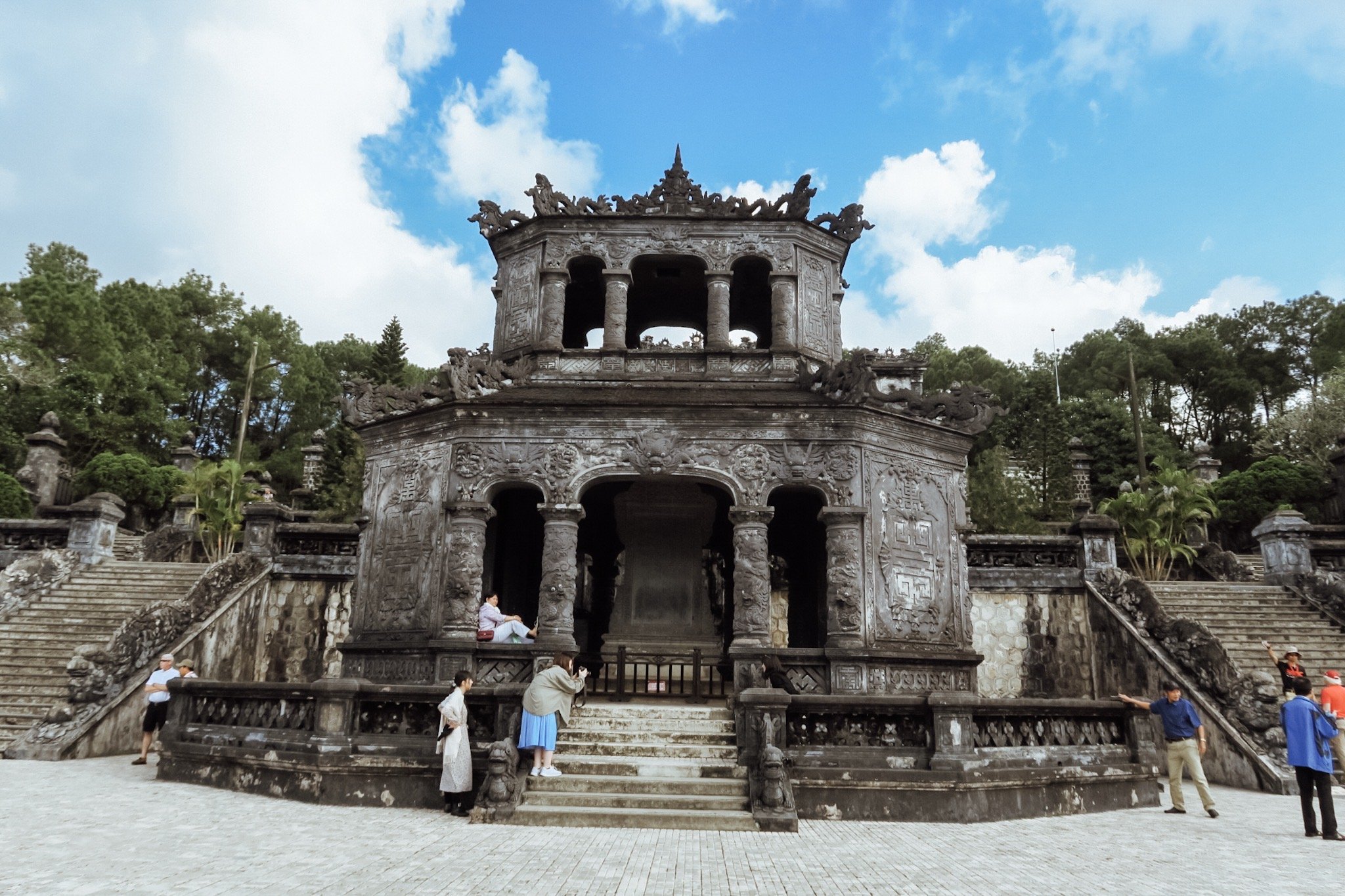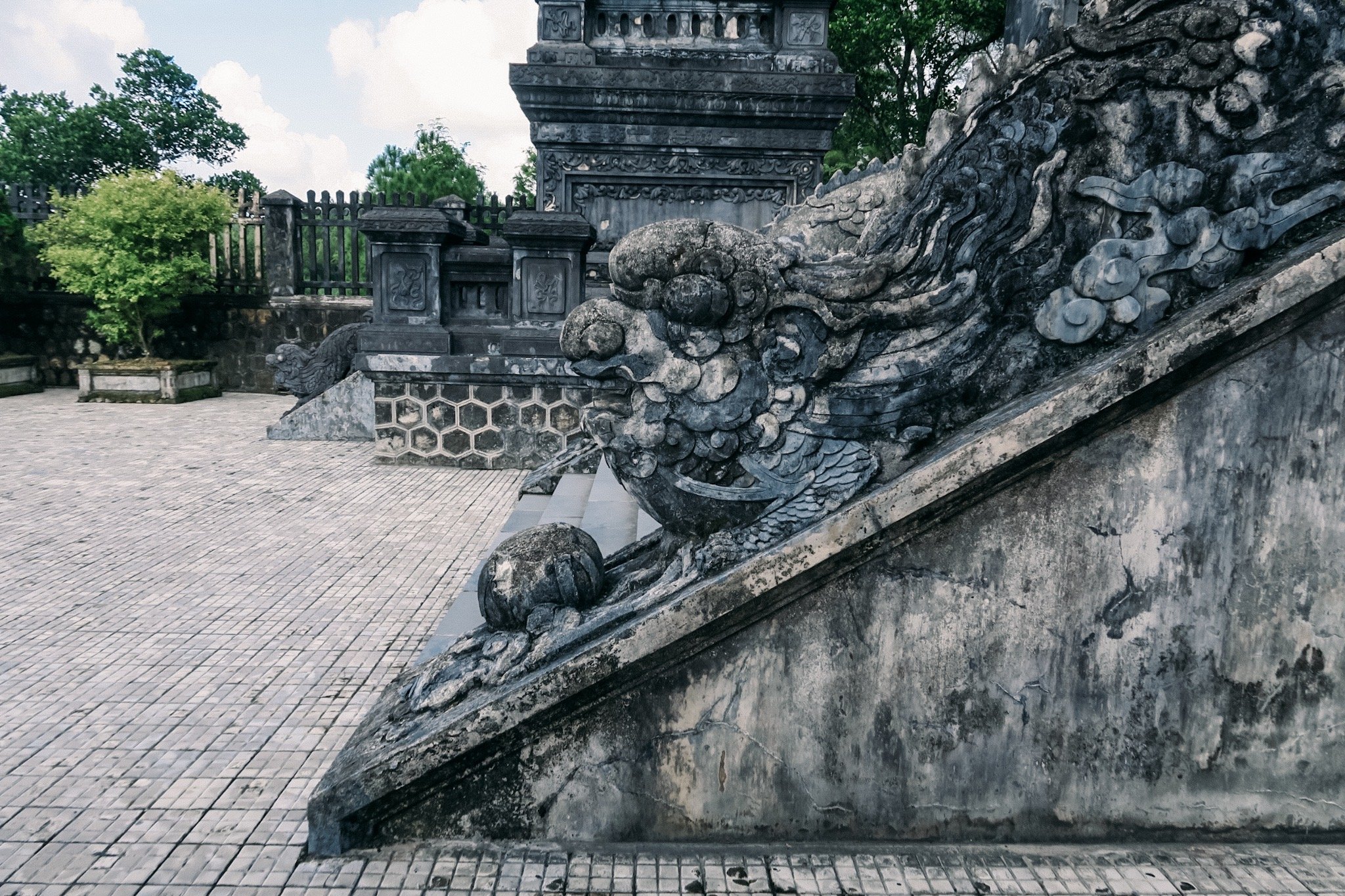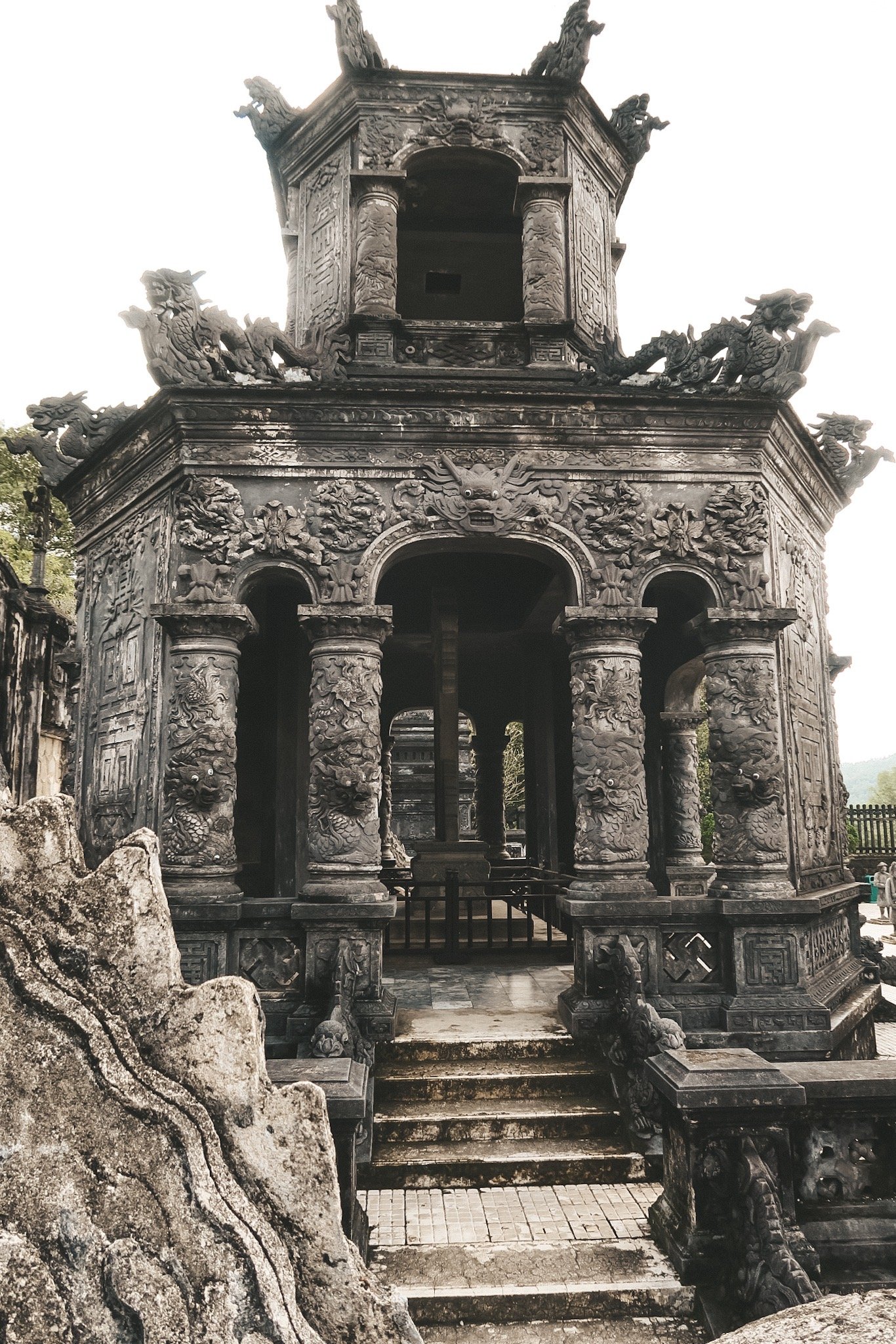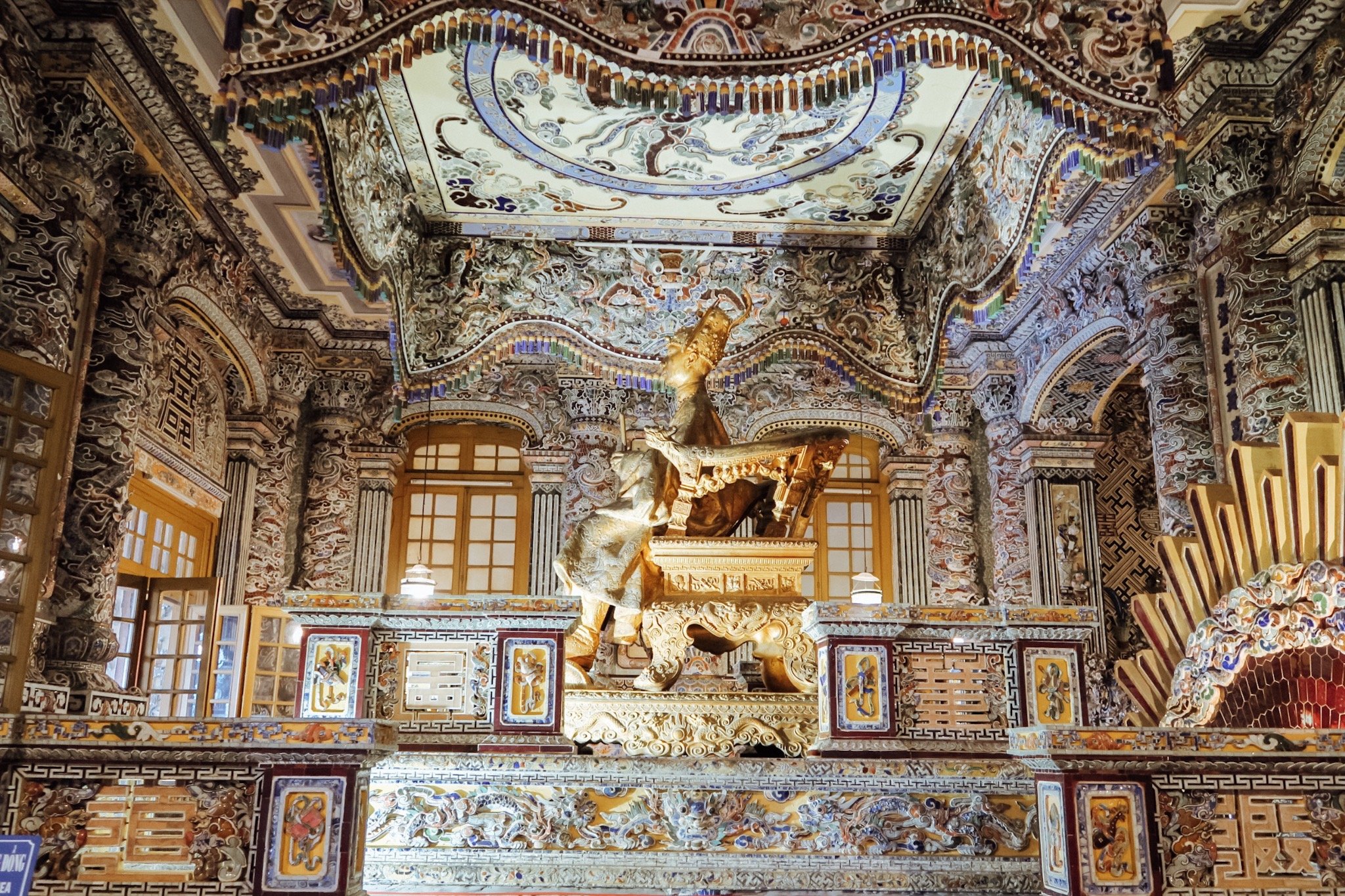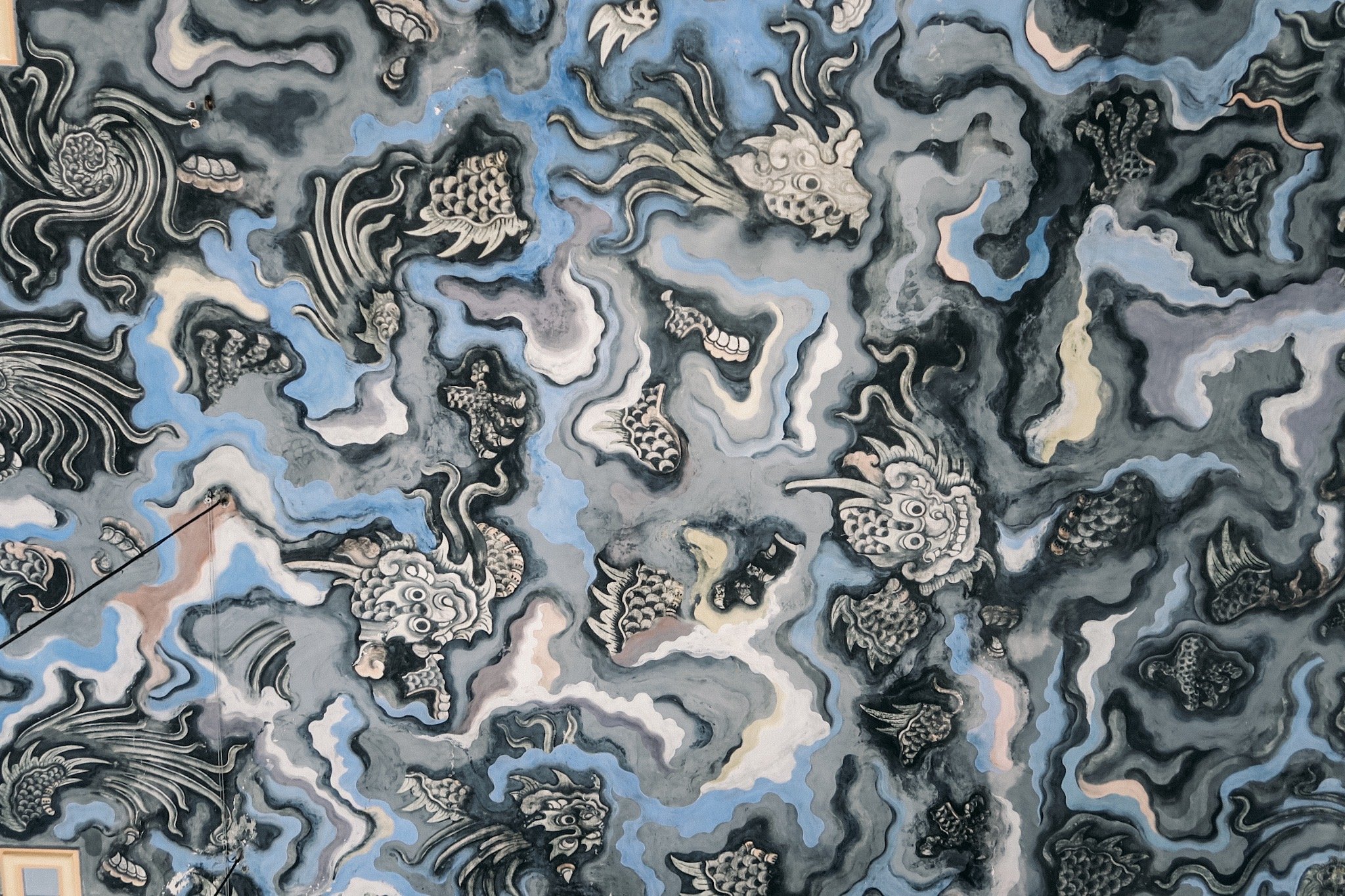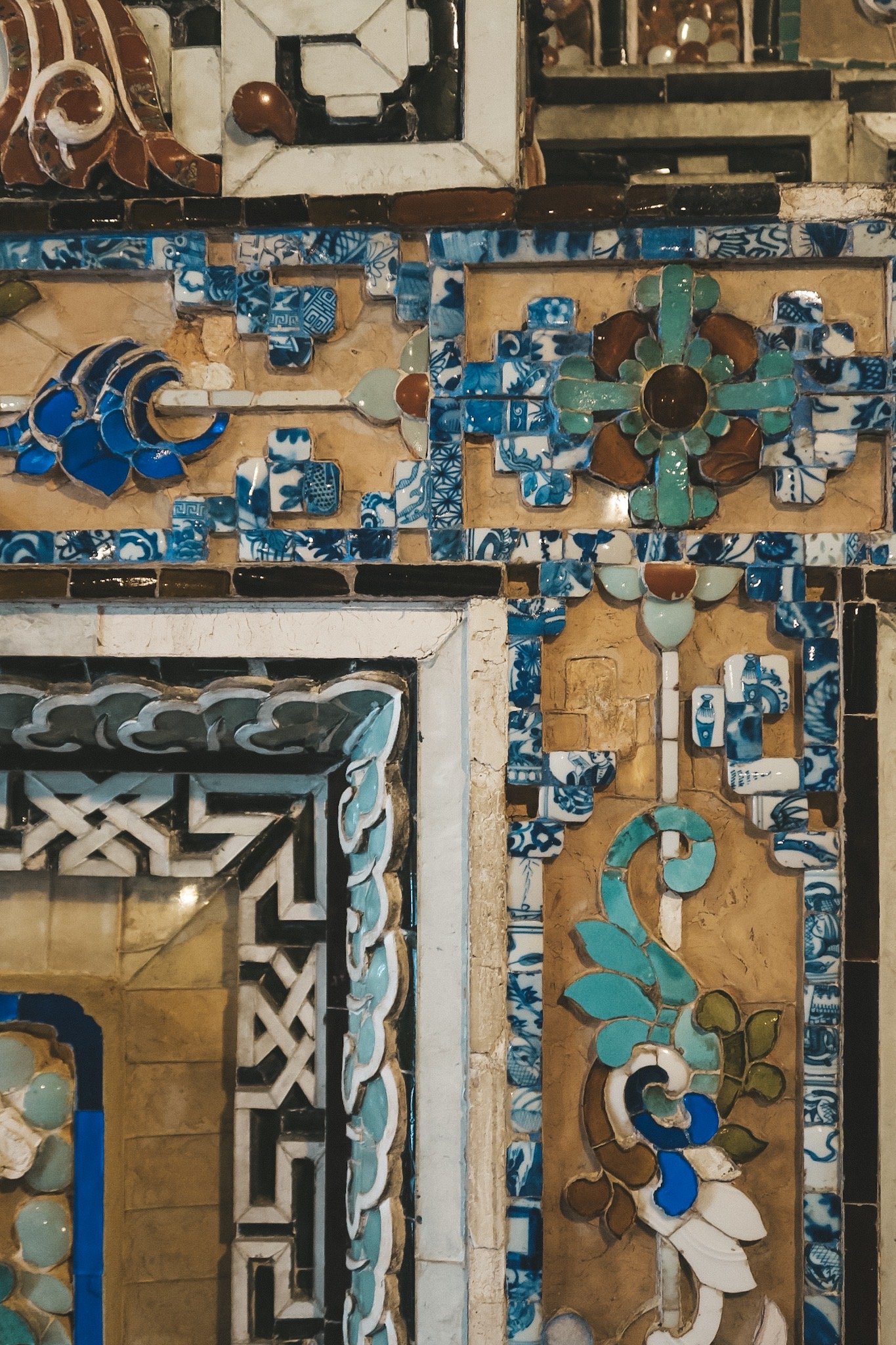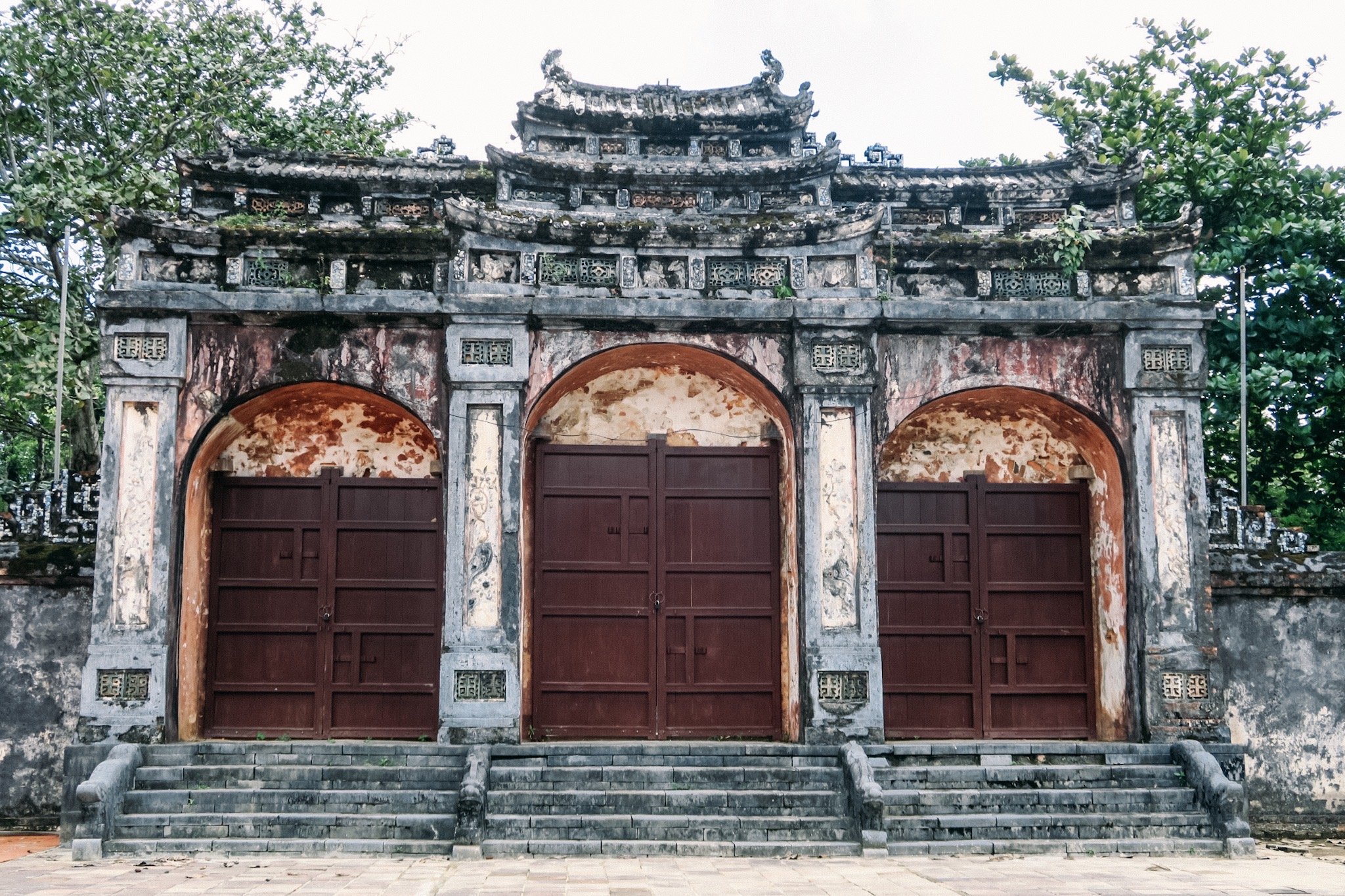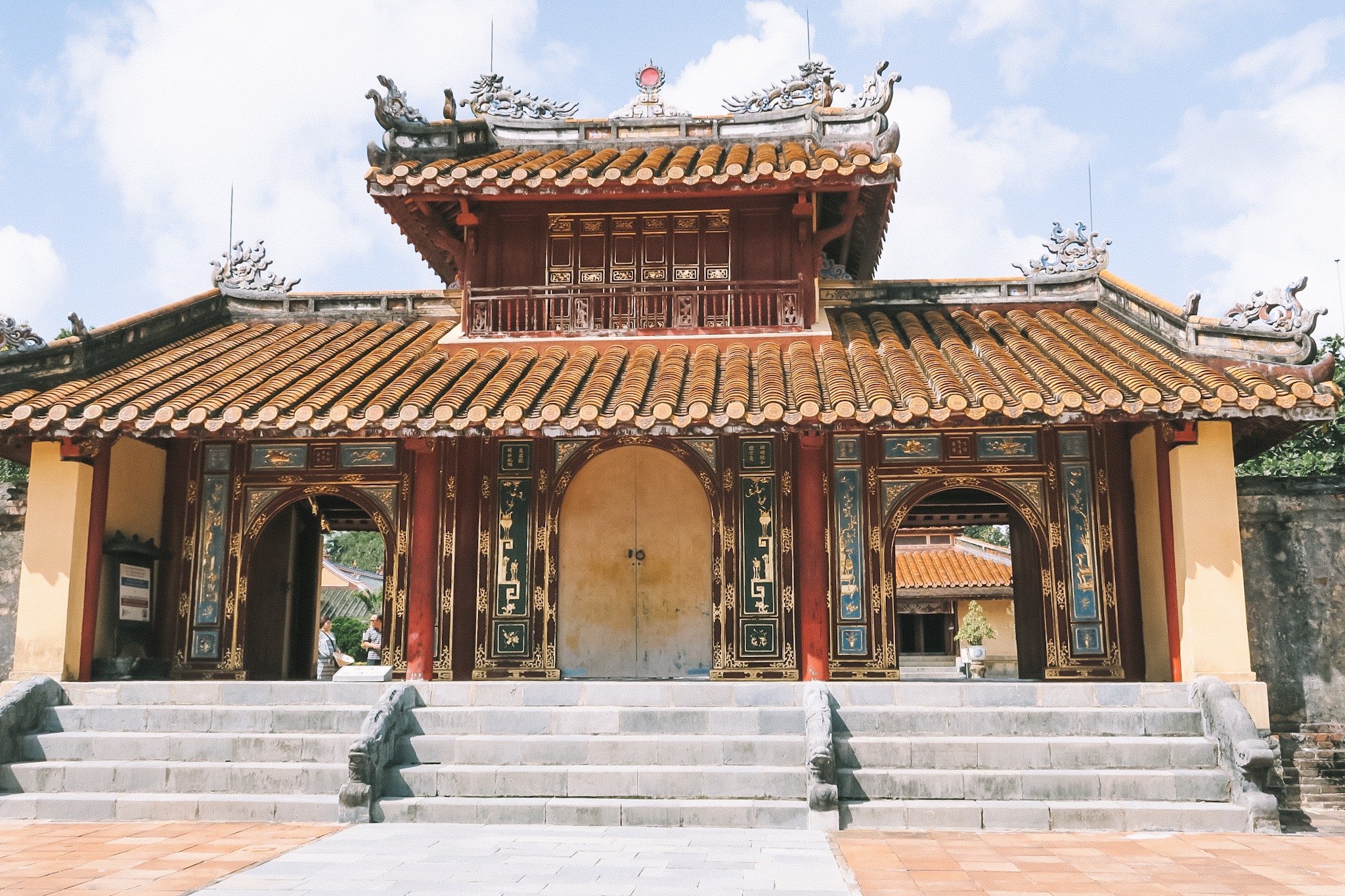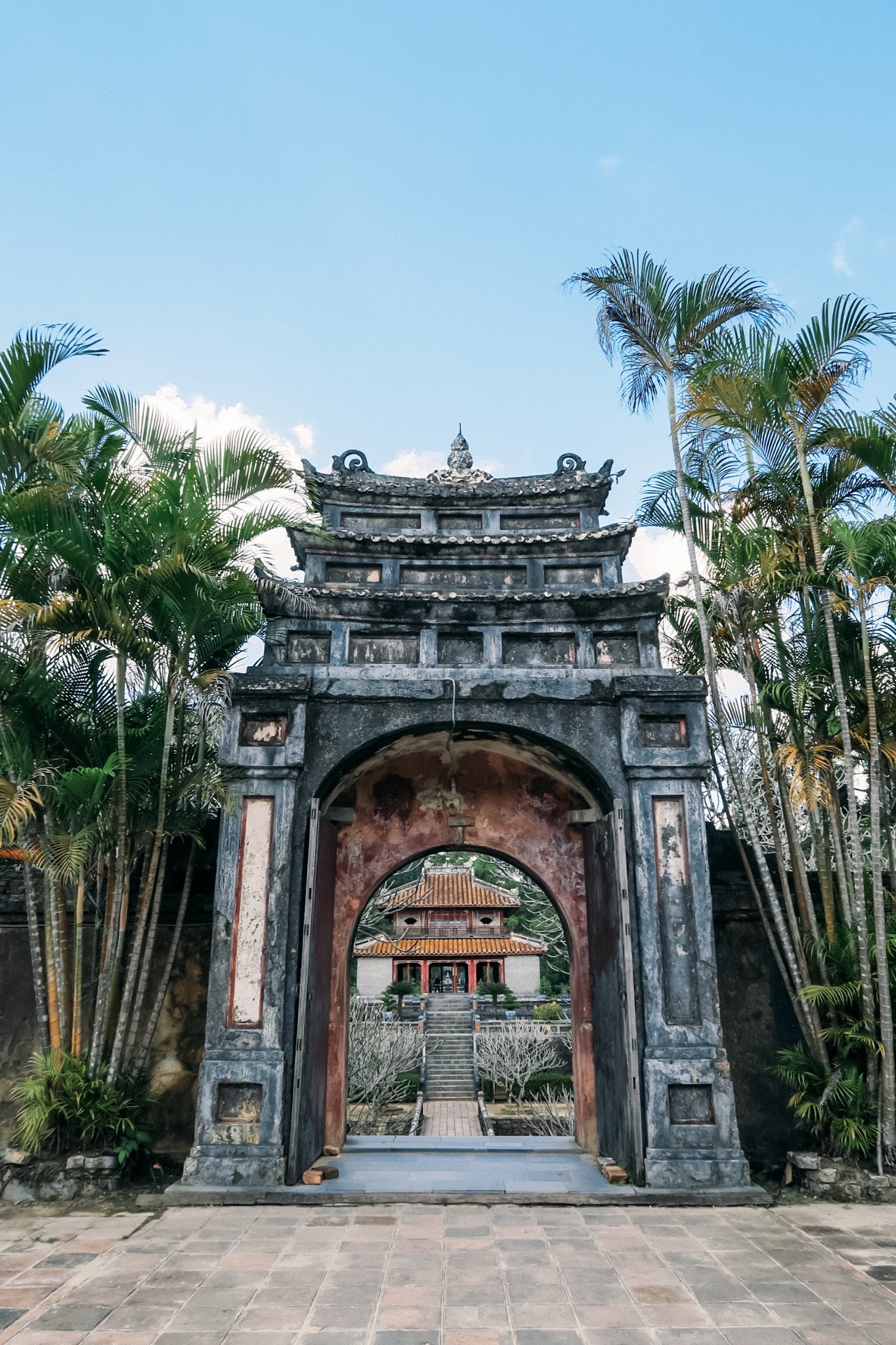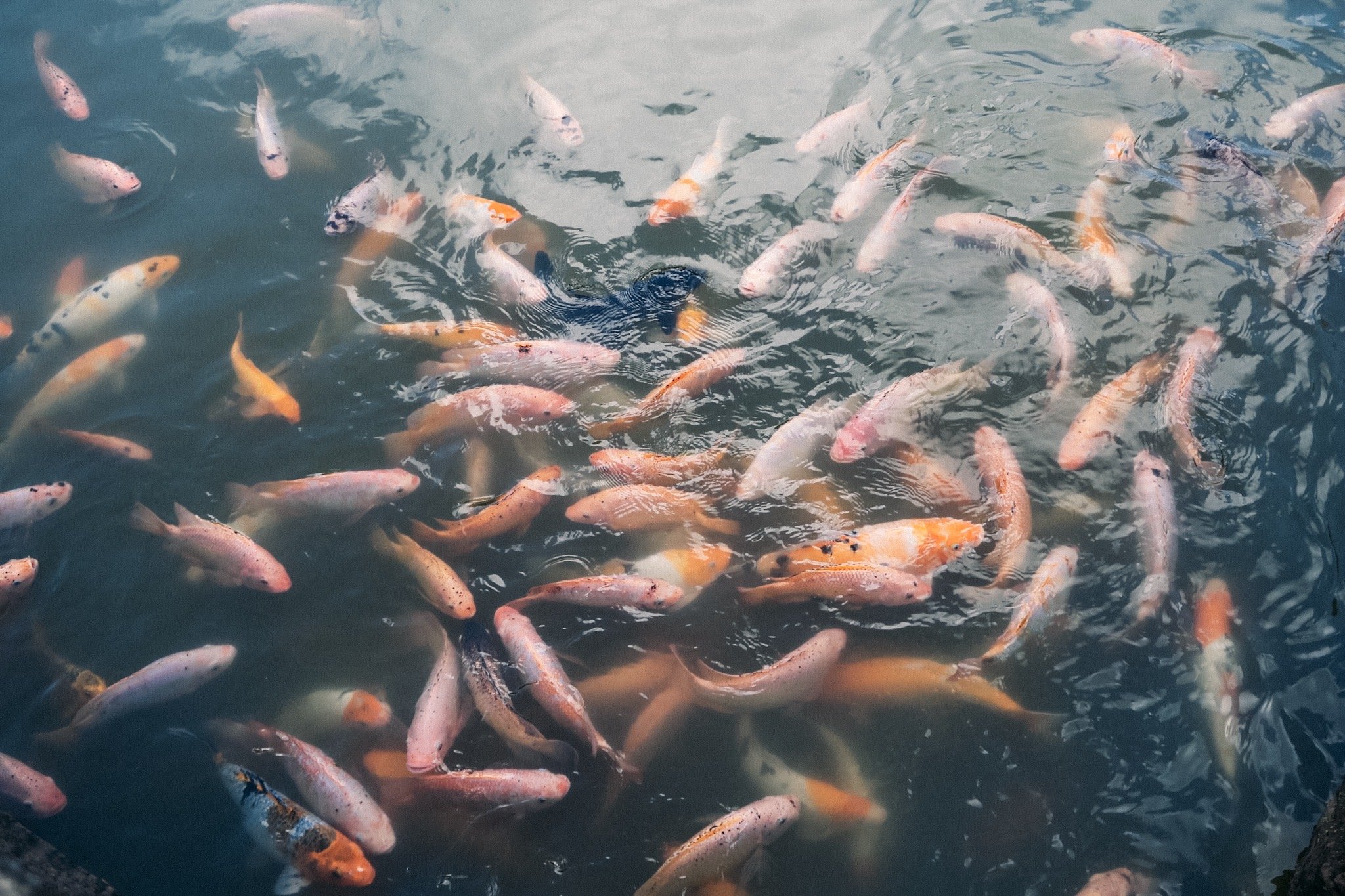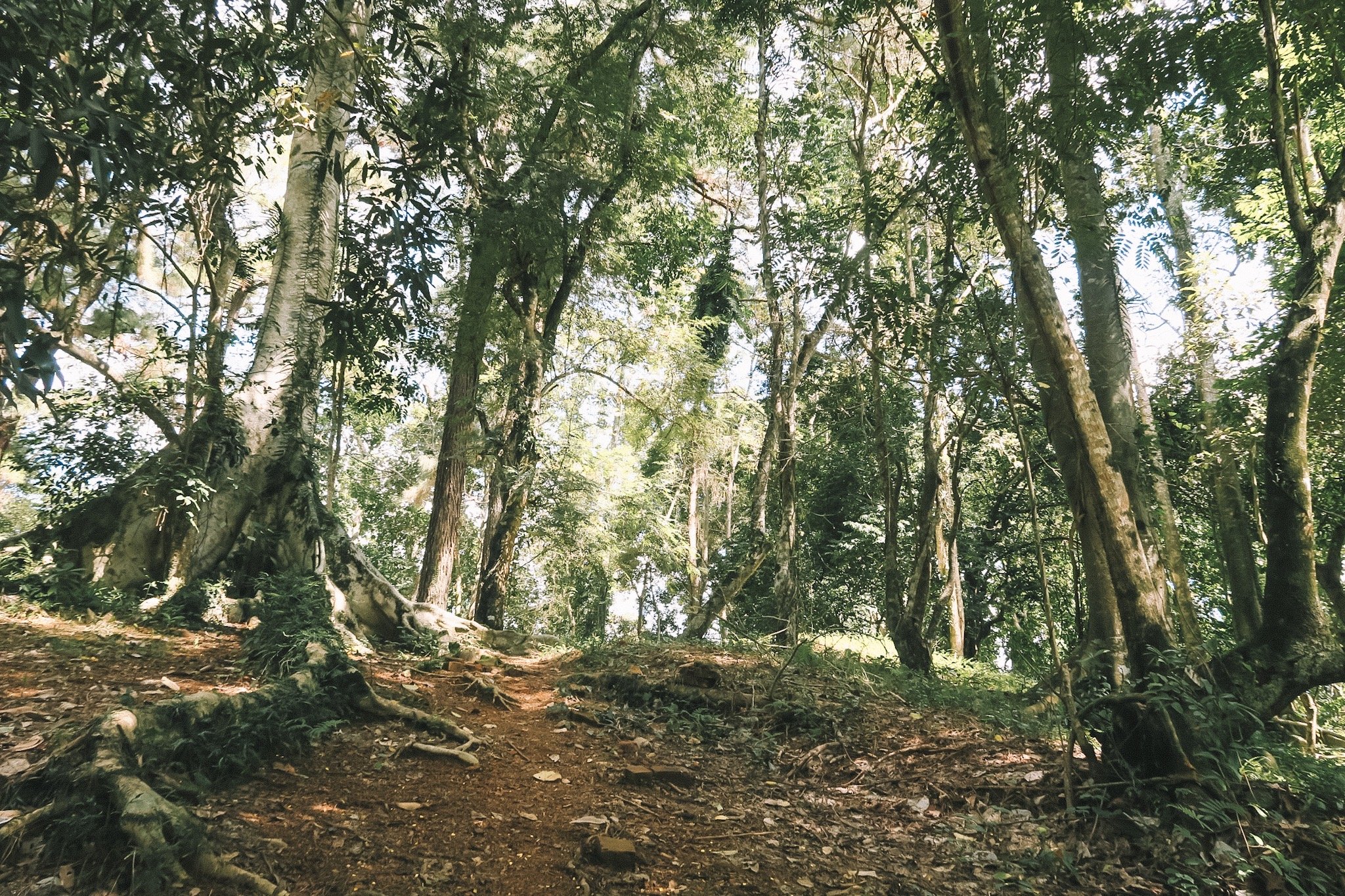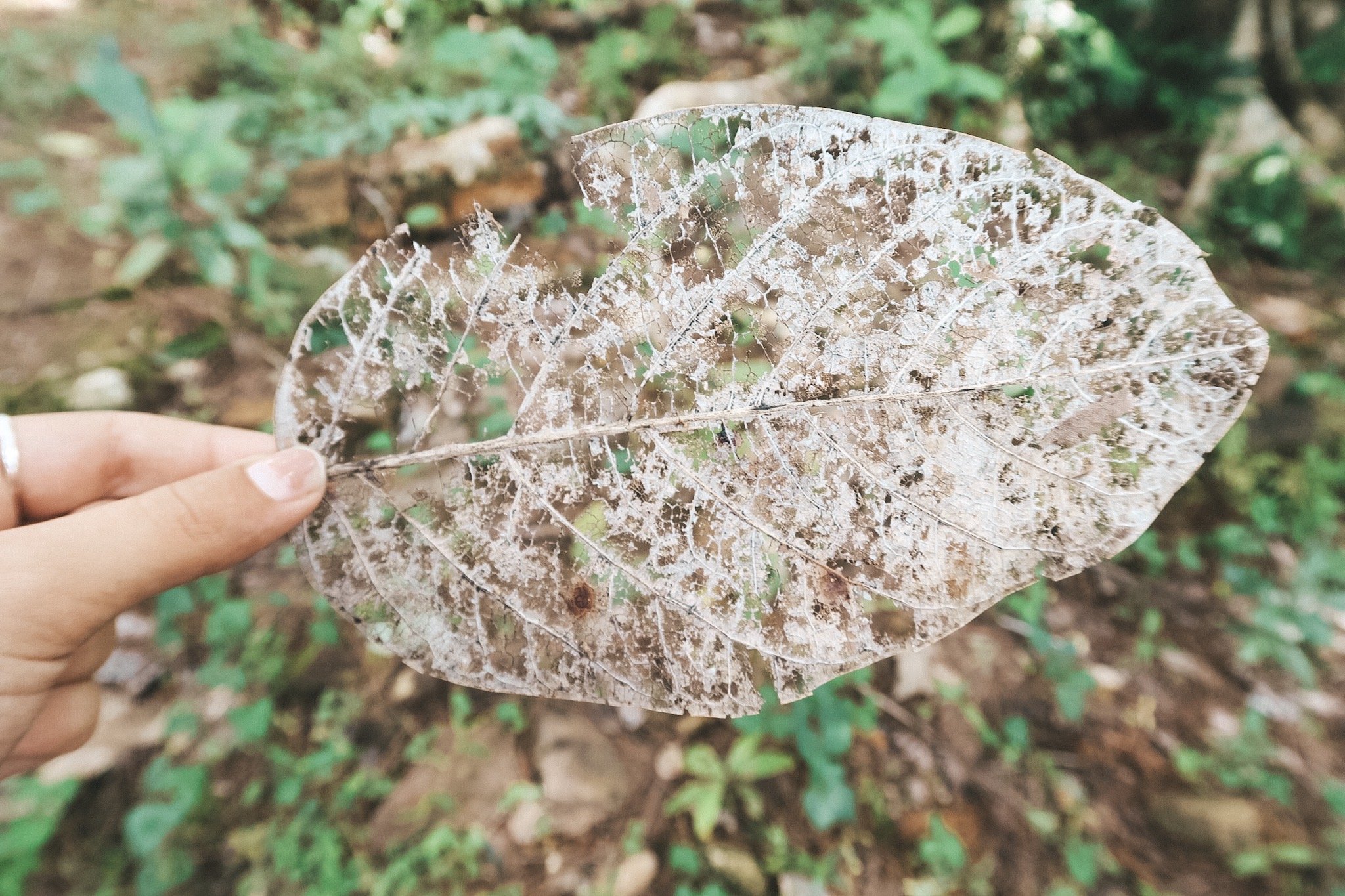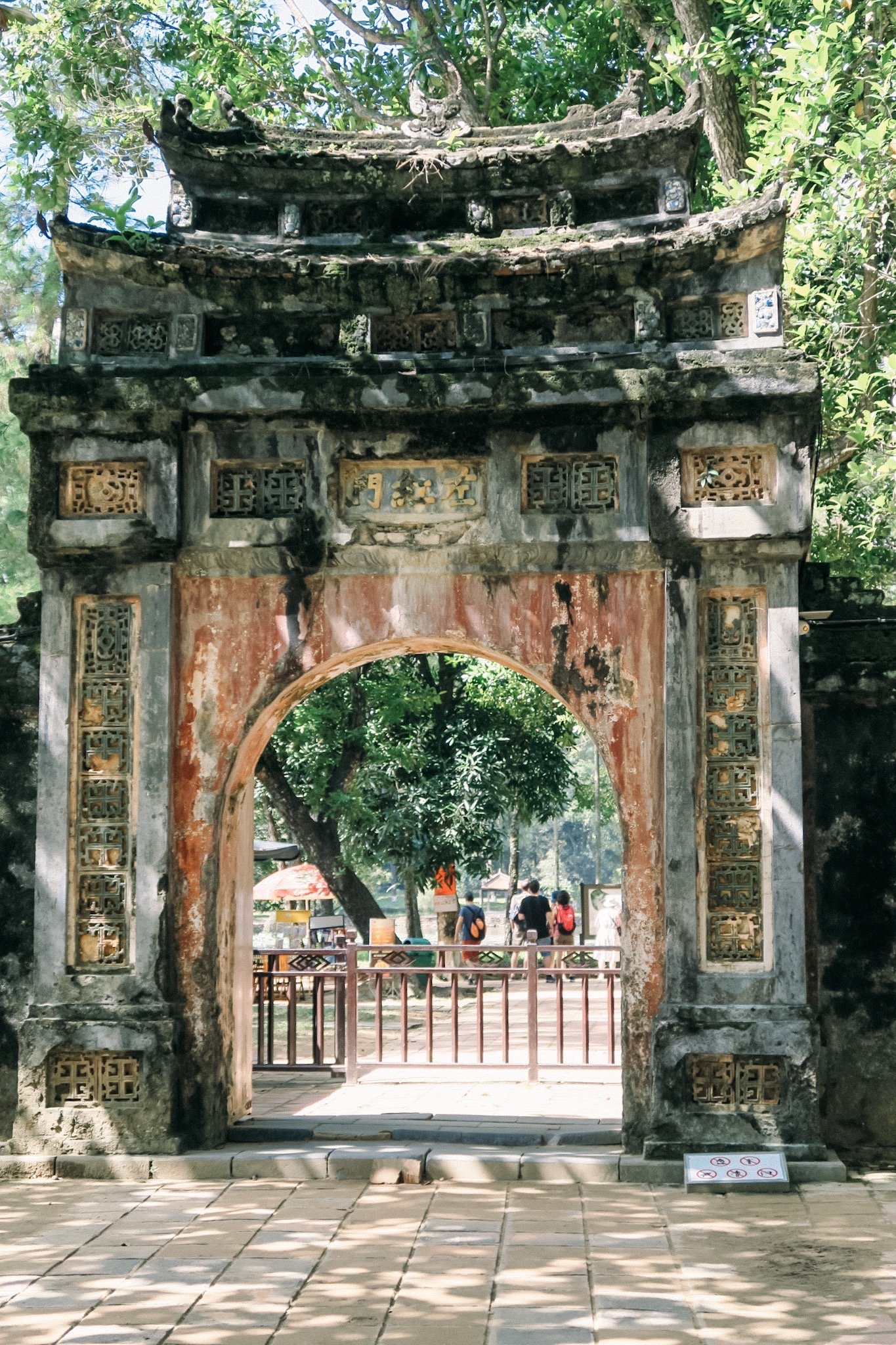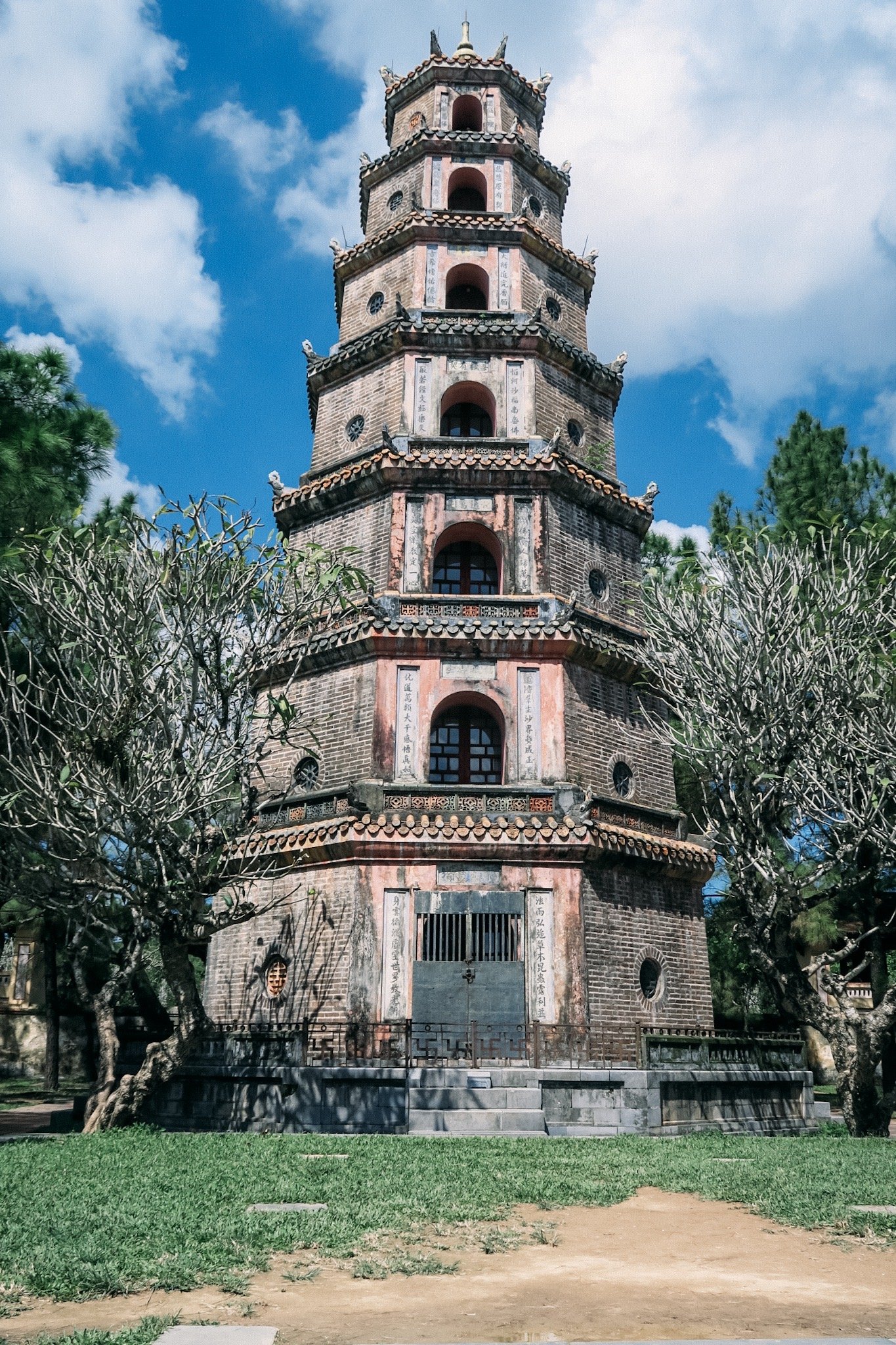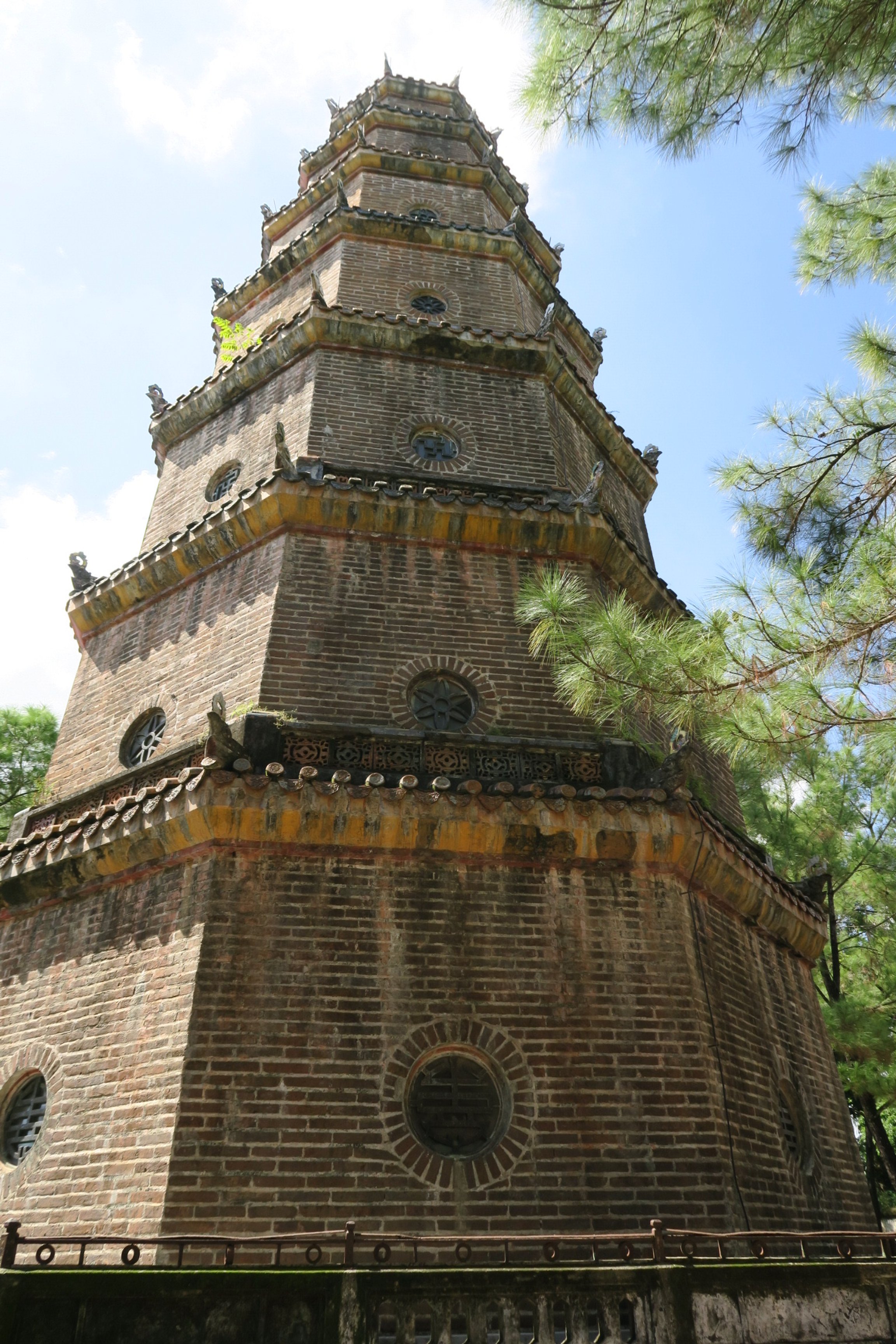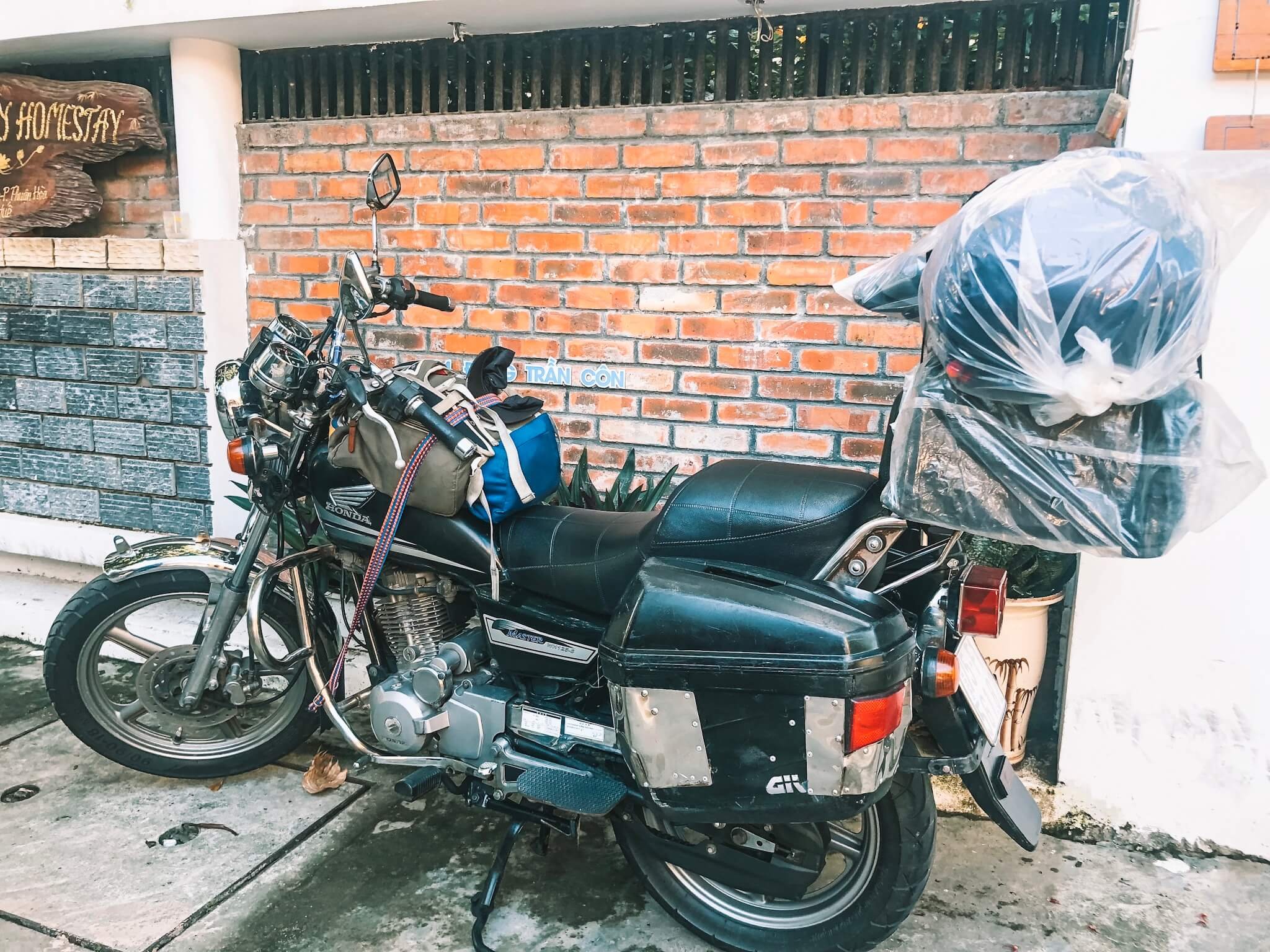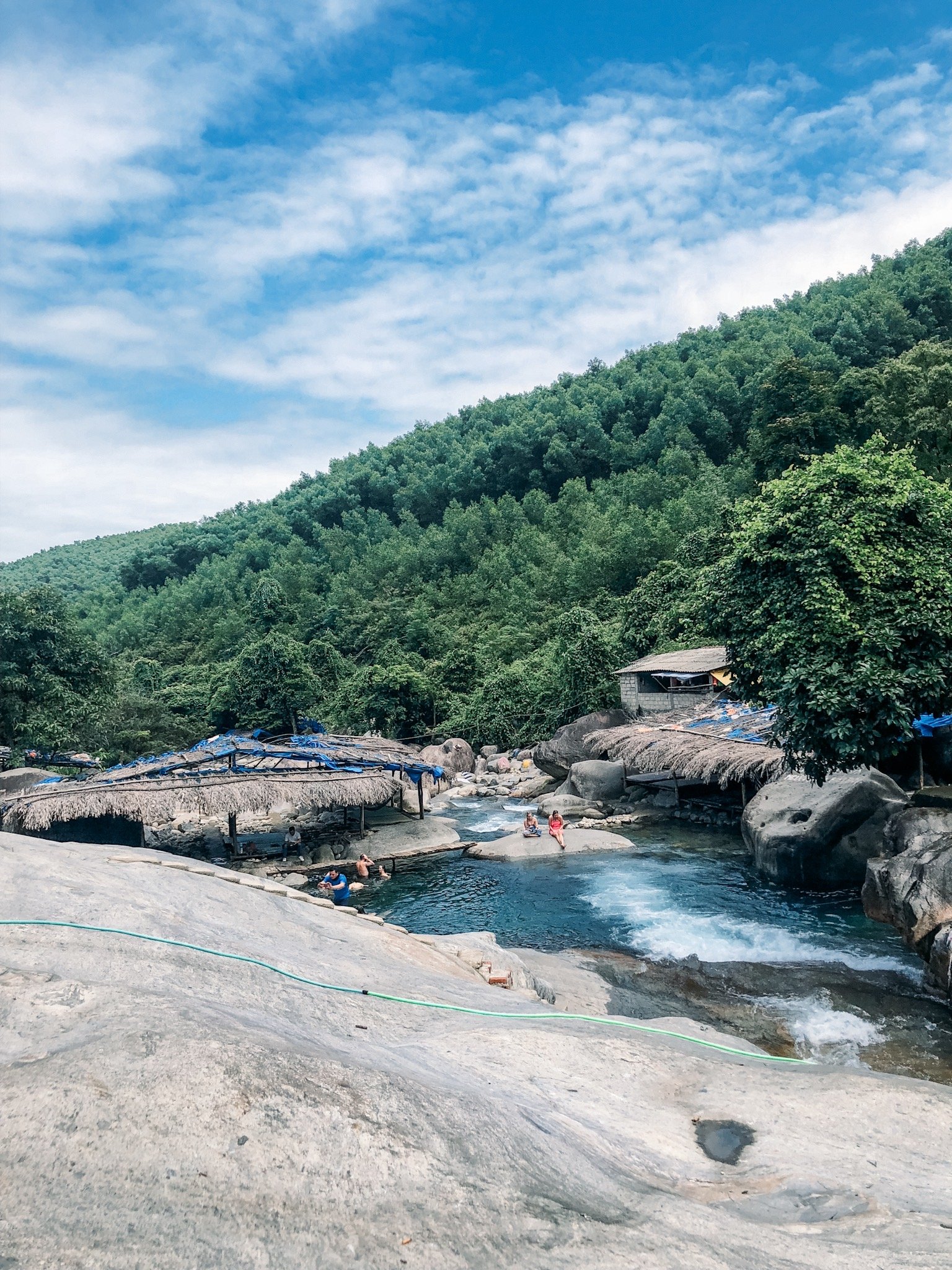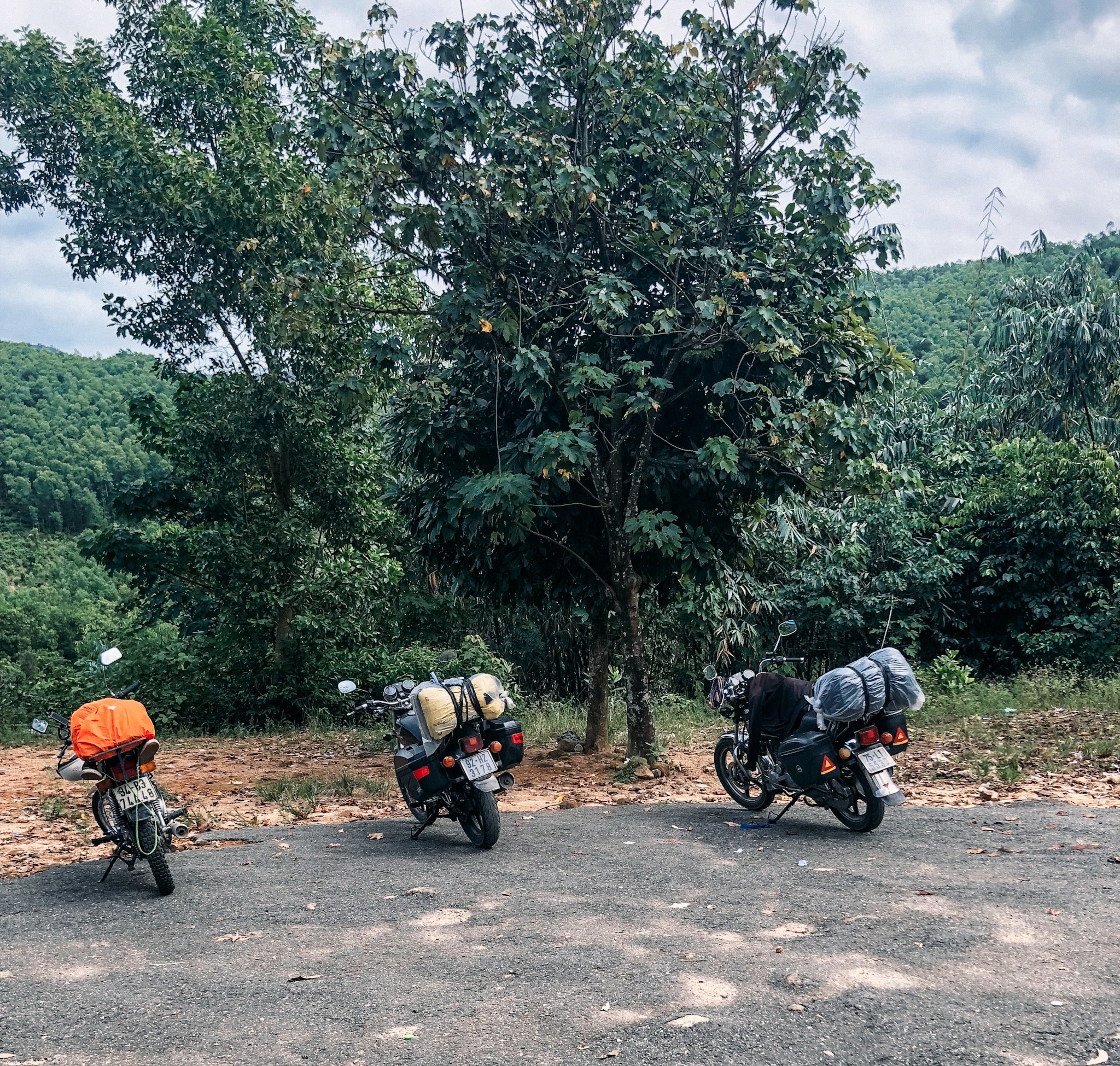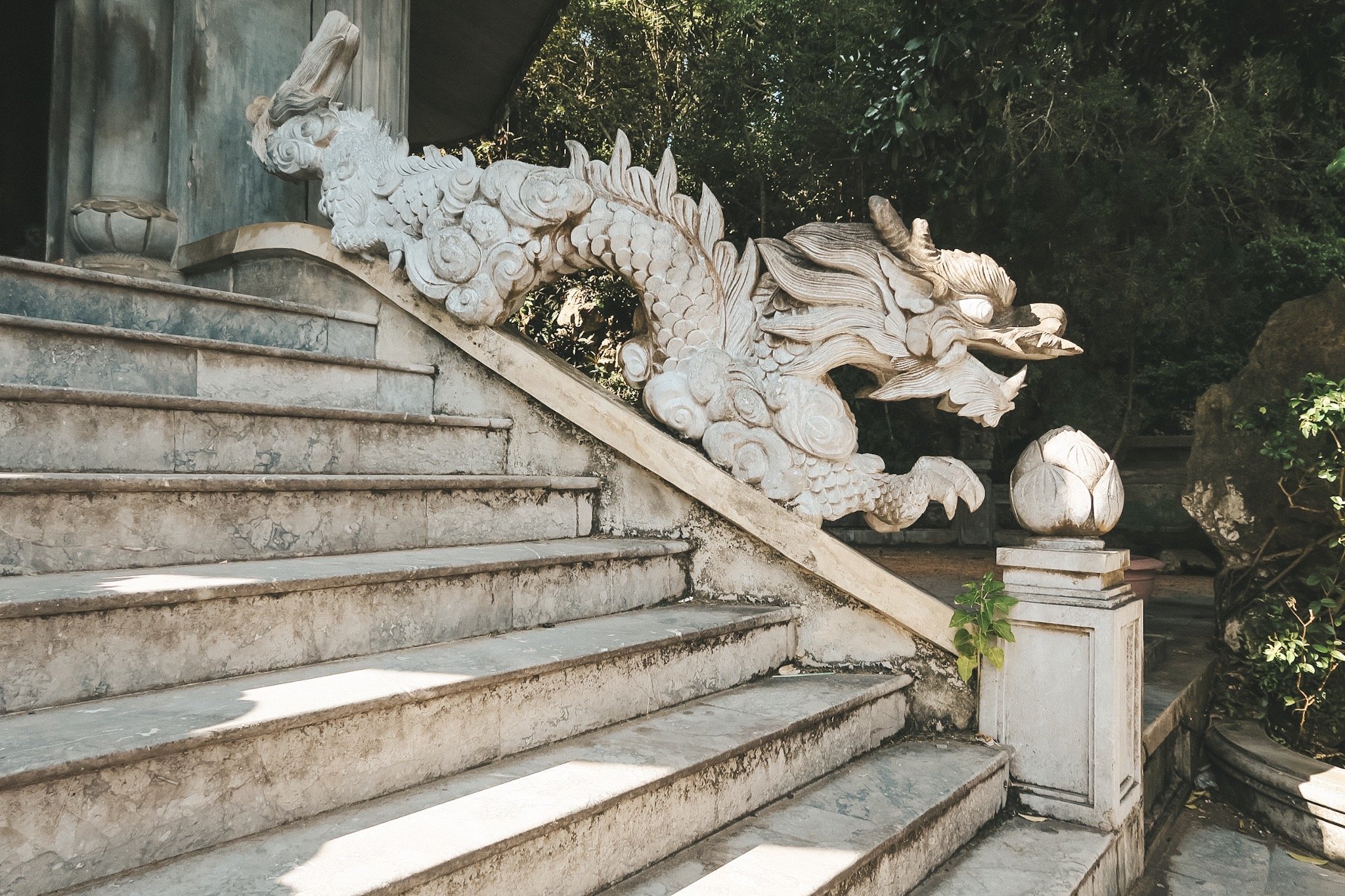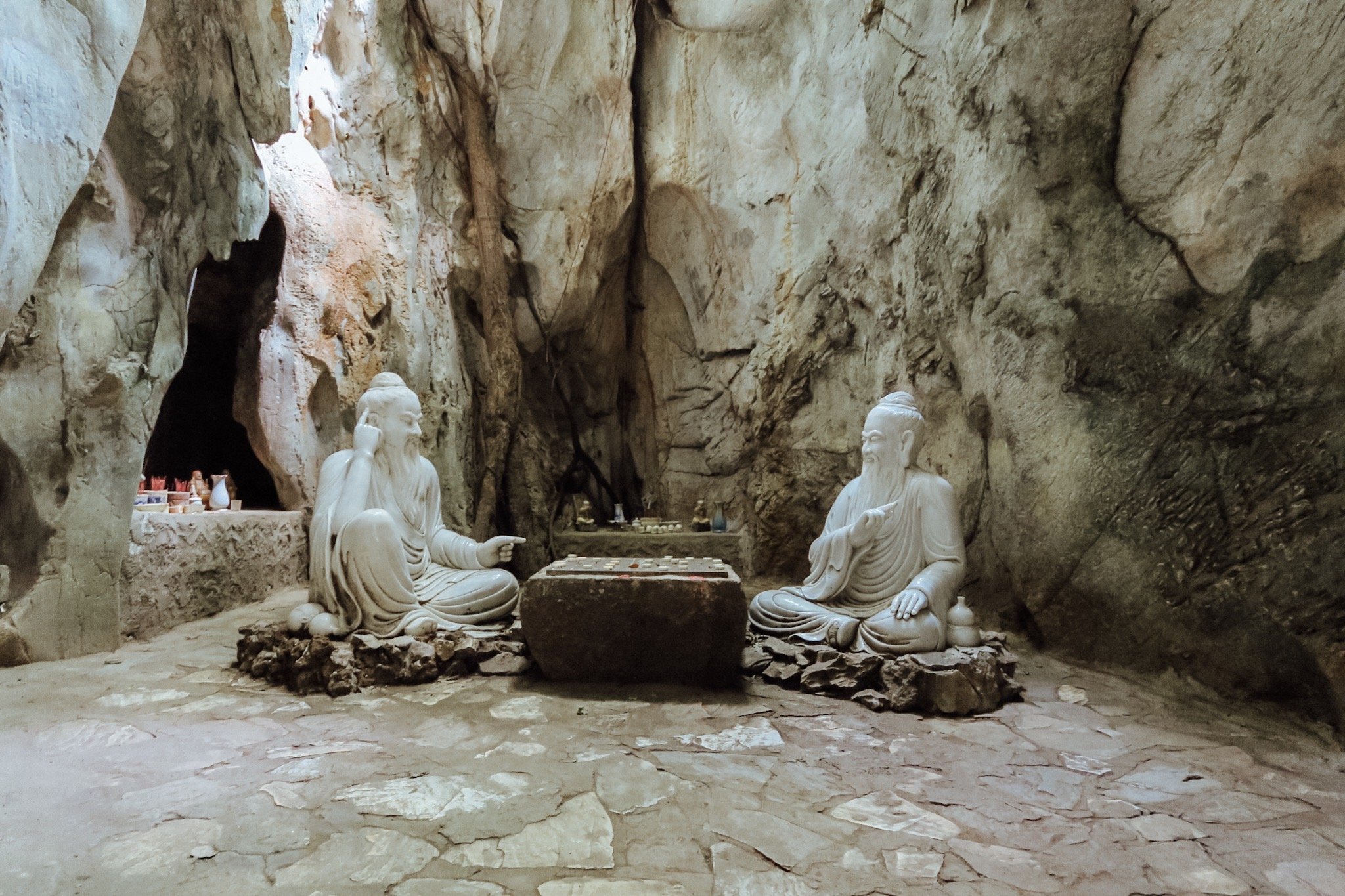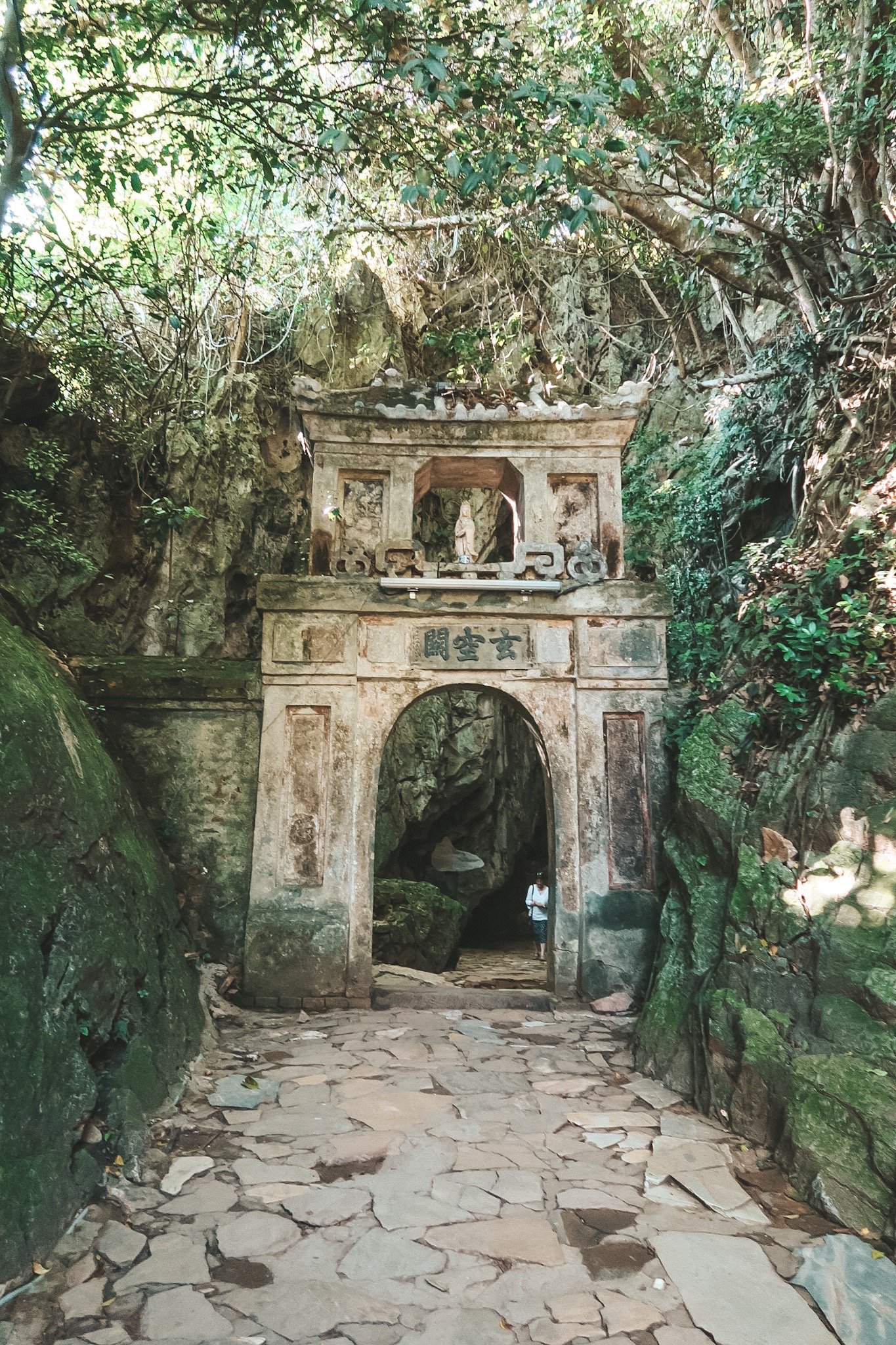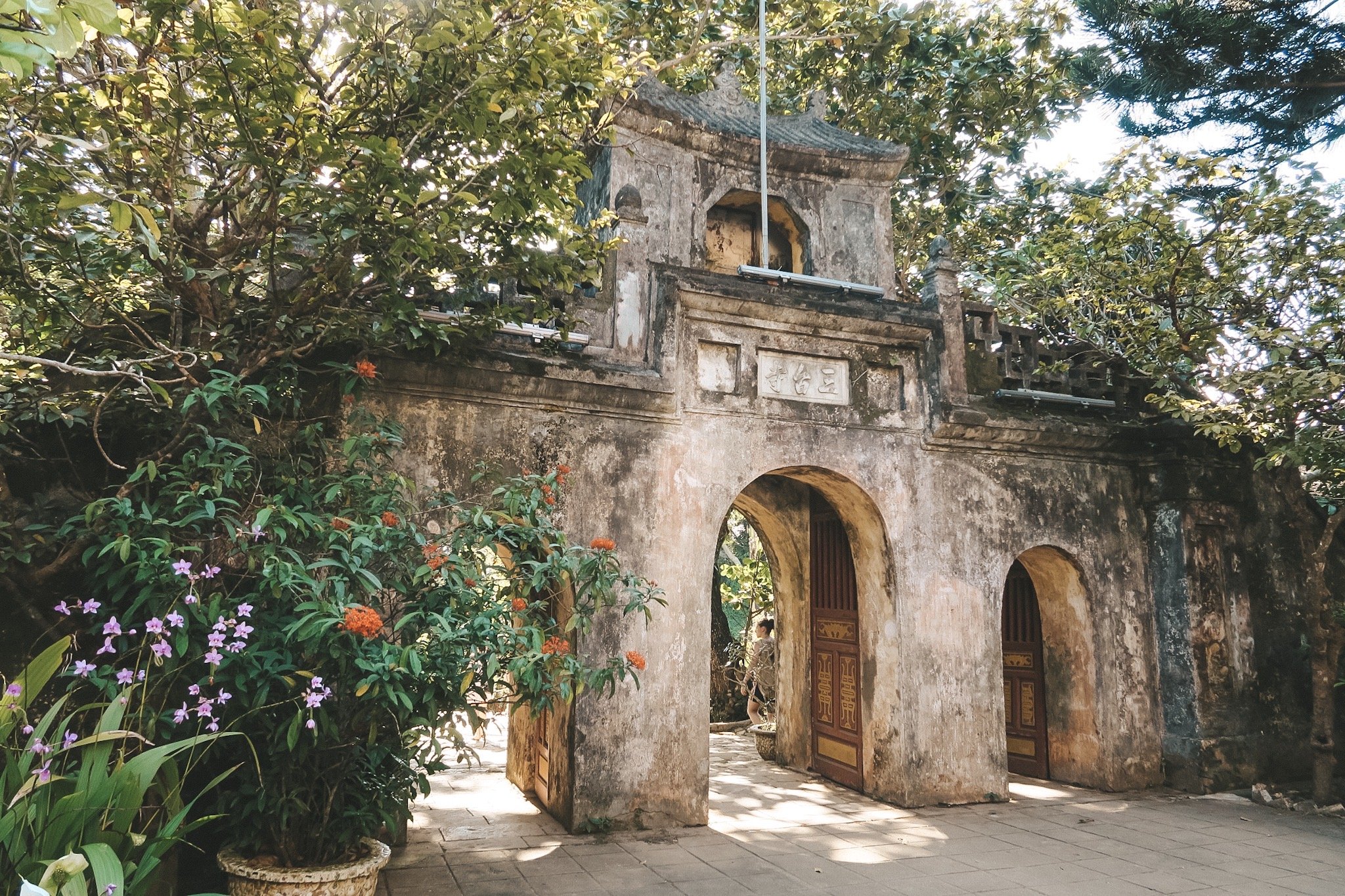Vietnam Week Eleven: Hue
After four days in Sapa and one night in Hanoi, I took a plane and went to the South of Vietnam. While planning my time in the South, I tried to find some workshops but unfortunately couldn’t. It seems that the south has lost it’s traditions and has become modernised. People seemed more westernised and the two places I visited —Hue and Hoi An were very touristic. They are both very picturesque, with wonderful colour palettes and colour inspiration in every corner. However, I didn’t feel like I was seeing the original or authentic Vietnam while I was there.
I stayed in Hue, the former capital of Vietnam for four nights. I stayed in this Airbnb which was really nice. It was easy to walk to lots of places and the people that owned it were very helpful, recommending things for me to do and see as well as places to eat. They also booked a hiking excursion for me as well as a motorcycle tour. The Airbnb is not were most of the hostels are but it’s in a peaceful area, and you can walk around to lots of places. However, I was the only one walking — I literally saw NO ONE walking in this city. Everyone is on a scooter, or a grab, or a car or a tuk tuk. Men kept stopping and asking me if I need a ride and why am I walking. (Vietnam was the only place I didn’t feel very comfortable in while travelling alone). Men stopping me every two minutes to ask if I need a ride and then keep driving next to me until I had to say I’m married or something else like that was quite annoying. Especially because I like walking and that’s what I had been doing in all other places I visited, especially for short distances. Anyway, Hue has some really beautiful spots and it’s a shame not walking around the town to see them.
The first day I only walked around in the afternoon and then went for dinner. Here is a list of places I visited throughout my trip in Hue:
Dong Ba Market: I always try visit markets in all the places I go to and it was nice to see this one too. You can buy everything here from souvenirs to spices to food and clothes.Gecko Pub: I went here for a drink one of the nights I was in Hue, it was nice, lots of young travellers visit this place.
Hope Centre: The Hope Centre focuses on assisting disabled and disadvantaged people by providing them with vocational training and work opportunities. The Centre also works with several Minority Groups living in the A-Luoi district situated in the mountainous region that’s near the Lao border. Artisans produce a variety of products from different materials and hand crafted jewellery. The A-Luoi weavers also contribute with their hand woven fabric, scarves and handbags.
Hue Museum of Royal Antiquities: This museum is really close to the Imperial City (you need to have the Imperial City ticket to enter) More about the museum further down the post.
Imperial City: The citadel within a citadel, or the old capital of Vietnam. Read more about this further down.
Le Ba Dang Art Museum: One of my favourite Museums, amazing work by a Vietnamese artist who lived in France for most of his life. Definitely recommend visiting it — more about the museum further down.
Lien Hoa Vegetarian: Very nice vegetarian food and friendly stuff.
Minh Mang Tomb: You need the Imperial City ++ ticket to get in here and you have to take a scooter or tuk tuk, it’s beautiful and definitely worth it. More further down the post.
Nam Giao Esplanade: If it’s on the way I recommend you visit this Heaven and Earth altar.
Nha Hang Ancient Hue: Traditional Hue food.
Nina’s Cafe: I really liked this cafe, it has breakfast, light lunch and dinner options as well as coffee and other drinks.
Nook Eatery: One of my favourite places in Hue, really cosy and small restaurant with tables at the very colourful terrace. Can be a bit expensive for South East Asia standards but it’s still nice for a drink and some snack. They also play really nice music and the atmosphere is great.
Royal Tomb of Khai Dinh King: You need the Imperial City ++ ticket to get in here and you have to take a scooter or tuk tuk, it’s beautiful and definitely worth it. More further down the post.
Ta.ke Japanese Restaurant: If you miss some sushi and other Japanese food here is the place to go.
Thien Mu Pagoda: A nice walk from the Imperial City, a lot of people go there with bikes as well. I would recommend you visit it (more further down).
Thuy Tien lake Abandoned Water Park: Slightly creepy but at the same time strangely photogenic and picturesque place to visit. Definitely recommend it and you can read more about it further down.
Tu Duc Tomb: You need the Imperial City ++ ticket to get in here and you have to take a scooter or tuk tuk, it’s beautiful and definitely worth it. More further down the post.
XQ Embroidery Museum: Very romantic art pieces all done with hand-embroidery. It’s a nice little stop if you are close it. (more further down)
The next day I visited the Imperial City. A citadel within a citadel, it housed the emperor’s residence, temples as well as palaces. Unfortunately, only a fraction of the original Imperial city is left, since it was heavily bombed during the French and the American Wars. Only 20 of the 148 original buildings have survived. I bought the ticket for the citadel as well as the two tombs (it’s worth it). I visited the tombs two days later.
It is quite difficult to navigate in the old citadel, they give you a map but its not clear where you are or where you are going. There are no signs or labels anywhere inside the citadel. That’s how I ended up bumping into Julia — asking her for directions. She was as lost as I was, so we ended up walking together. I loved all the colours, patterns and details found in every corner of the buildings.
I also visited the Hue Royal Antiquities Museum. The collection reflects the social, ritual, political and spiritual life of the aristocracy under the Nguyen dynasty. There are costumes, porcelains, furniture, daily life facilities and ritual items. It was interesting to see things made from different materials such as silver, gold bronze, bone, ivory, ceramics, wood, paper as well as fabrics. Unfortunately photos weren’t allowed.
After some light lunch, I went to the Le Ba Dang Art Museum. Le Ba Dang was born in 1921 in Vietnam, but moved to France in his late teens, he studied in Toulouse and graduated from Fine Art University there. He is quite famous and had exhibitions all over the world, France England, Switzerland, Germany, the Netherlands, Sweden, the USA as well as Japan and India.
The museum is situated by the Perfume River. Over 300 pieces are exhibited. He combines Eastern with Western cultures and artistic styles. He works with a lot of different media, oil paints, watercolours, fabric, collage, wood and metal. I really liked his work and style. Here are some photos:
Next, I went to the XQ Embroidery Museum. They welcomed me with tea, and a lady took me around the museum, answering questions. It was nice to see artisans at work, embroidering. The embroidery here is more modern, and not as traditional as the embroidery I saw in the North of Vietnam. The pieces here were more romantic, with lots of colours (chemical threads) and floral patterns. The work was beautiful.
The following day I went to the Bach Ma National Park. The owner of the Airbnb booked this hiking excursion for me and it was great. It was a full day of hiking, we saw tunnels from the wars, waterfalls, lots of different insects and bats. I didn’t take down the name of the company but I am sure that if you asked you would find something similar to what I did. The good thing was that we were the only group there (around 25 people). We had two guides which helped us. Some of the parts were difficult and slippery (it also rained while we were there — but they were very prepared, they even gave us raincoats). I really enjoyed it. I definitely recommend wearing trousers and hiking boots though. We had to cross some rivers, and there were loads of leeches. Definitely worth it though.
The next day in Hue (again with the help of my Airbnb host) I went on a motorcycle tour. Dung was my driver, he has been doing this job for around 20 years. He usually takes people from Hue to Hoi An. He has a proper motorcycle, not a scooter. In the beginning it was a bit scary but I quickly got over it and ended up loving every minute on that bike. First we went to the Thuy Tien lake Abandoned Water Park. It’s supposed to be closed however you can still go in if you pay a fee. I paid a dollar to the people that were at the entrance and then walked in. I was the only one there, and it was great — I imagined it a bit bigger but it was still a nice experience and I recommend it. Here are some photos:
Next we went to the Tu Duc Tomb, the Royal Tomb of Khai Dinh King and the Minh Mang Tomb. (To enter you have to have the ticket for with the Imperial City ++).
The Tomb of Tu Duc was built for the Nguyễn Emperor of the same name and took three years to build from 1864–1867. It is divided into a Temple Area and a Tomb Area. The emperor Tu Duc reigned the longest of any monarch of the Nguyen dynasty, ruling from 1848-1883. It is a shame that there is almost no information (labels or anything like that) to read next to these temples/tombs/buildings… However, it is amazing to see how elaborate the designs of these places were. The details are all so well thought through.
The Royal Tomb of Khai Dinh is located in Chau Chu mountain near Hue. It was built for the twelfth Emperor of the Nguyen dynasty. It was built from 1920 to 1931 taking 11 years to complete. The tomb is a blend of Western and Eastern architecture. This tomb is also interesting to see. I liked how dark all these buildings looked from outside and how colourful they were at the entrances and inside.
Finally, the Minh Mang Tomb. This King was the second ruler of the Nguyen Dynast. He governed the southern and central Vietnam from 1820 to 1840. He implemented an extensive building program, which included construction of his own funeral complex in the southwest corner of the city. Set along the Perfume River, the burial site comprises 40 structures, including a building for the emperor’s clothes, pavilions for mourners, and the tomb itself. The buildings are elaborate with lots of bright colours, detailed patterns, ornaments and finishes.
Next we also went to the Thien Mu Pagoda also known as the Pagoda of the Celestial Lady. It is a historic temple of the city, which was built in 1601. It’s iconic seven-story pagoda is regarded as the unofficial symbol of the city.
Here are some photos of all four sites:
So the next day I was supposed to take a train to go to Hoi An. I had booked my ticket and I had everything planned. However, Dung (the driver from the previous day) convinced me that it would be sooooo much better if he drove me there. We would stop in many places and it would be a once in a lifetime opportunity to drive on a motorcycle. We would also pass the Hai Van Pass (it was in a Top Gear episode). So somehow I got convinced (I probably asked him 500 times if he is sure that we can both be on the motorcycle as well as my two backpacks and one small suitcase) and we did it. It was probably one of the best experiences I have in Vietnam. Being on that motorcycle for a whole day is something I will never forget.
The landscapes I saw while riding were amazing. It’s so different to be able feel the wind and to be able to see the landscape without having windows or anything else next to you. I loved it. First, we stopped in a fishing village. There, I saw two girls, Anna and Lottie. They were doing the same thing as me, going to Hoi An with easy-riders (apparently that is actually what these drivers were called). They were from Germany, and we decided to drive close by and go to the next stop together.
Next, we stopped at the Elephant Springs. Some rocks there look like elephants and thats why the springs have that name. There are some parts were the current is so strong it’s like a water slide. It was cold but again lots of fun.
After some light lunch somewhere close to the springs, we kept driving, passing through amazing landscapes and entering the Hai Van Pass. I’ve said it already but I really loved it there. The landscapes were mesmerising.
Before reaching Da Nang, we passed by the Marble Mountains. Also known as the Ngu Hanh Son which means “five elements” in English. The Marble Mountains are five marble and limestone hills located in the south of Da Nang. The five mountains are named after the five elements. Kim (metal), Moc (wood), Tho (earth), Hoa (fire) and Thuy (water).
It was really nice to visit this place, I hadn’t heard of it before and if it wasn’t for Dung I wouldn’t have gone. All these mountains have cave entrances and numerous tunnels. You can also climb to the summit of Mount Thuy (water). There also many sanctuaries, pagodas and temples.
Here are some photos:
That was the last stop before Hoi An. We passed through Da Nang a coastal city in central Vietnam known for its sandy beaches and history as a French colonial port. It's a popular base for visiting the inland Bà Nà hills to the west of the city. From there, it was about half an hour to Hoi An.
I was going to write one blog post about both Hue and Hoi An, however I realised that this post is really long already, so Hoi An will be on a separate blog post.
I hope everyone has a great weekend!
xxx
Christiana
